T he F lorida Surveyor

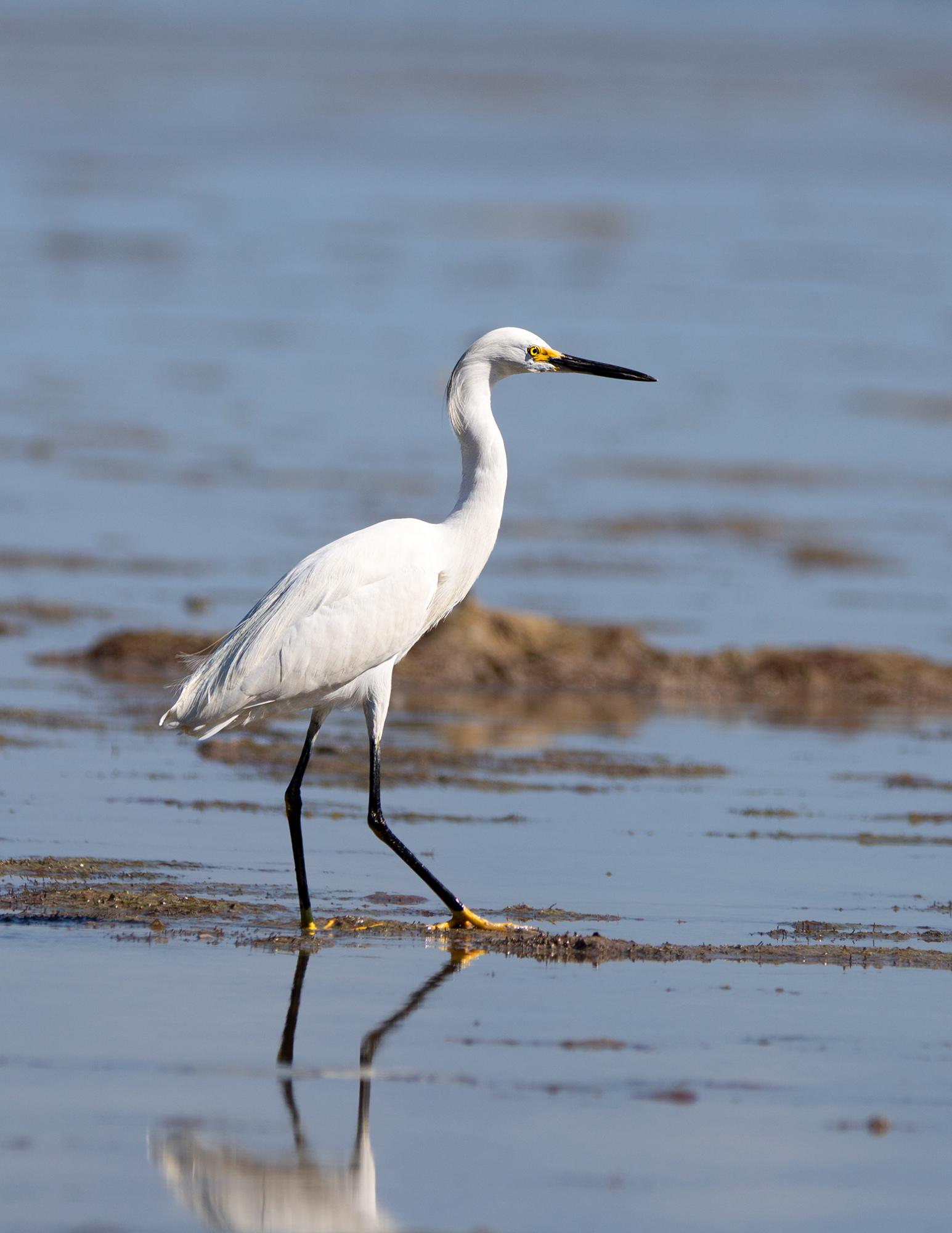
IN THIS ISSUE New Report on GPS Frequency Bands Geospatial Industry & the Metaverse Surveyor for St. Johns County
October 2022 Volume XXX, Issue 9
Increase productivity by combining lidar scanning with robotics
The GTL-1200 combines the power of a robotic total station with a best-inclass laser scanner to perform digital layout and capture high res 3D scans in a single setup. Simplify the scanning process and dramatically reduce the need for post processing by capturing scan data on survey control. The workflow seamlessly integrates with ClearEdge3D software for advanced construction QA workflows and as builts.

• Quick layout and scanning with a single instrument.
• Wi Fi capability enables point clouds to be transmitted wirelessly
• Proven robotic total station design, integrated with a scanner.

• Full dome scan in seconds, now with 2x point cloud resolution.
• Scan density tailored to minimize software processing time.
• Point clouds accurately matched to BIM model coordinates.
Reduce your modeling time by up to 75%
EdgeWise™ software from ClearEdge3D offers a host of modeling features and tools that help users quickly convert point clouds into usable, as built 3D plant and building models. The software’s automated feature-extraction capability, pattern-recognition technology and object recognition algorithms provide you with maximum efficiency. Using these features, the modeling process can be completed in a fraction of the time previously required.
• Increased accuracy and speed when modeling
• Ability to do 3D models of as built pipes, structural elements, ducts, walls, tees and conduits
• MEP (Mechanical, Engineering and Plumbing), structural and architectural modeling capabilities
• Billion point visualization engine with photo realistic project views
• Fully interoperable with Plant3D, CADWorx, PDMS and Autodesk

43316 State Road 19 Altoona, FL 32702 www.lengemann.us
Revit
lorida
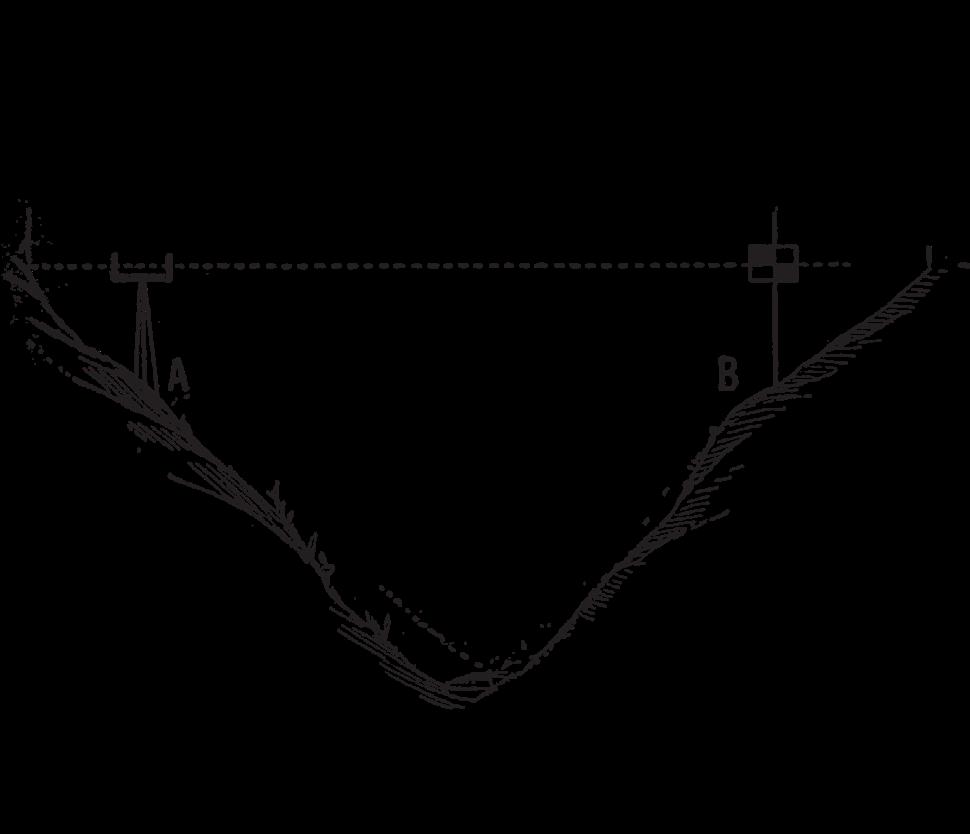
Surveying
are members of FSMS.
winning publication

members
well as articles relevant to the surveying profession.
months out of the year about national, state, and district events and
addition, continuing educational courses are also
Page 3 SURVEYOR For St. Johns County 7 FSMS DISASTER Relief Fund 6 FROM THE Archives 35 GEOSPATIAL'S Place in the Metaverse 11 2022 CONTINUING Education Courses 19 NEW REPORT ON GPS Frequency Bands 23 50th FSMS Anniversary 1955-2005 22 SUSTAINING Firms 27 PRESIDENT’S Message 1 2022 FSMS Officers 2 2022 DISTRICTS and Directors 3 The F
Surveyor is the official publication of the Florida
and Mapping Society, also known as FSMS. It is published monthly for the purpose of communicating with the professional surveying community and related professions who
Our award
informs
eleven
accomplishments, as
In
available. TABLE OF CONTENTS
PRESIDENT’S Message
Wow, what a difference a month makes.
Hurricane Ian, Florida's deadliest hurricane since 1935, has torn through the heart of Florida, laying waste to far too many and far too much. As some folks know, FSMS maintains a Disaster Relief Fund that was first established after Hurricane Andrew, and we have received a few requests from the area (Lee County) for folks in dire need of financial assistance. This Fund is not bottomless, but I am sure we can find a way to bolster it if need be. If you are in need, or if you know of someone in need, please contact the FSMS office.
I had more for this month’s President’s Message, like upcoming PSM license renewals, but this month is too solemn to reflect on that, or anything else besides getting help, in whatever form, to those who were affected, in whatever manner, by Hurricane Ian.
I will resume my naturally long-winded diatribe next month. Until then, be safe.
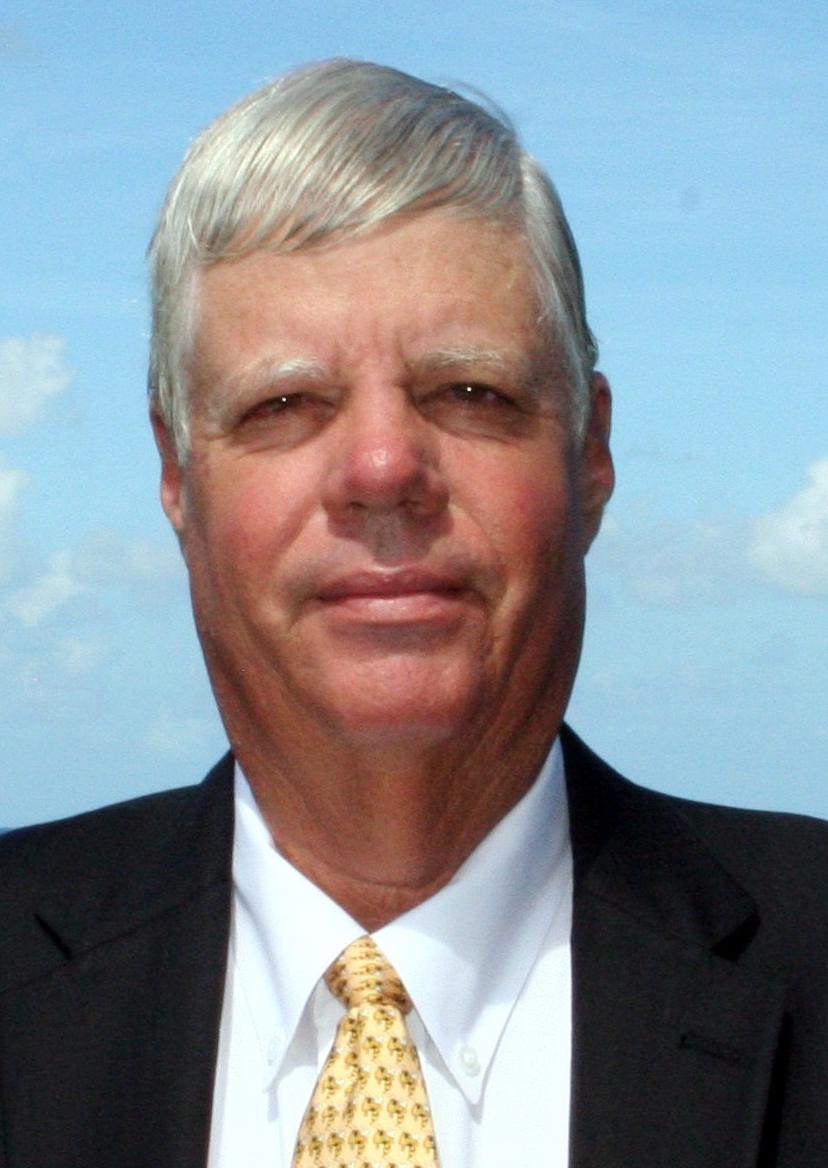
The Florida Surveyor Page 1
President Lou Campanile, Jr. (954) 980-8888 lou@campanile.net



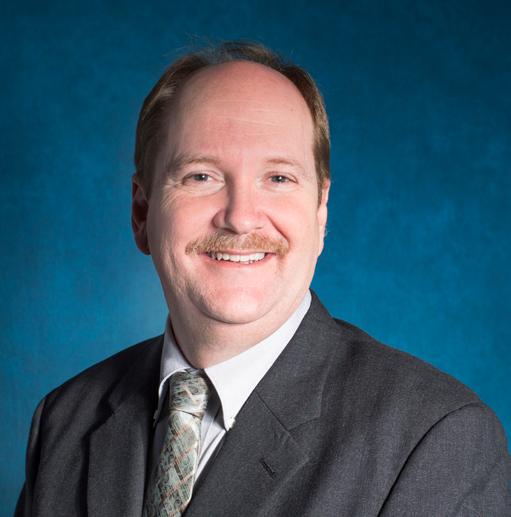
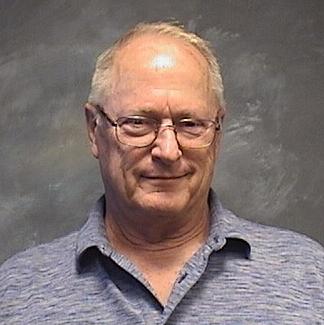
October 2022 Page 2 President-Elect Howard Ehmke (772) 286-8083 howard@gcyinc.com Vice President Jim Sullivan (561) 687-2220 J im.Sullivan@wginc.com Secretary Sam Hall (352) 408-6033 surveysam17@outlook.com Treasurer Bon Dewitt (352) 392-6010 bon@ufl.edu Immediate Past President Hal Peters (352) 304-9534 hpeters@gpinet.com2022 FSMS Officers
Eric
District

Jeffrey Cooner
Earl Soeder
Manny
Russell Hyatt
1 2 43 7 6 5 Charlotte, Collier, DeSoto, Glades, Hardee, Hendry, Highlands, Lee, Manatee, Sarasota Shane Christy (941) 840-2809 schristy@georgefyoung.com
1 - Northwest Bay, Calhoun, Escambia, Franklin, Gadsden, Gulf, Holmes, Jackson, Jefferson, Leon, Liberty, Madison, Okaloosa, Santa Rosa, Taylor, Wakulla, Walton, Washington
Stuart (850) 685-1149 eric.stuart@sam.biz Chad Thurner (850) 200-2441 chad.thurner@sam.biz
(239) 707-6679 jeff@ coonerconsulting.com Broward, Palm Beach Mark Sowers (954) 868-7172 msowers@mgvera.com Miami-Dade, Monroe Jose Sanfiel (305) 351-2942 psm5636@gmail.com
(407) 601-5816 earl.soeder@ duncan-parnell.com
Vera, Jr. (305) 221-6210 mverajr@mgvera.com
(941) 748-4693 russell@hyattsurvey.com Alachua, Baker, Bradford, Clay, Columbia, Dixie, Duval, Gilchrist, Hamilton, Lafayette, Levy, Marion, Nassau, Putnam, Suwannee, St. Johns, Union Nick Digruttolo (863) 344-2330 ndigruttolo@pickettusa.com Randy Tompkins (904) 755-4235 randytompkins1@ outlook.com District 2 - Northeast Citrus, Hernando, Hillsborough, Pasco, Pinellas, Polk, Sumter Greg Prather (863) 533-9095 gprather@pickettusa.com Alex Parnes (813) 493-3952 alexwolfeparnes @gmail.com District 4 - West Central Brevard, Flagler, Indian River, Lake, Okeechobee, Orange, Osceola, Seminole, Martin, St. Lucie, Volusia Al Quickel (407) 567-1566 alq.fsms@gmail.com District 3 - East Central District 5 - Southwest District 6 - Southeast District 7 - South NSPS Director Robert Johnson (772) 562-4191 bobj@carterassoc.com 2022 Districts and Directors
Broward Benjamin Hoyle benjamin.hoyle@kci.com Palm Beach Lee Powers lpowers@zemangroup.com FAU Geomatics Brett Costanza brettcostanza@hotmail.com Miami-Dade Frank Paruas fparuas@gpinet.com District 5 District 6 District 7 Central FL Sam Hall surveysam17@outlook.com Indian River Brion Yancy brionyancy@gmail.com Volusia Anthony Sanzone ecls_@bellsouth.net Charlotte Harbor Derek Miller millersurveying@comcast.net Collier-Lee Steve Shawles II sshawles@haleyward.com Manasota Aaron Levine aaron@msbsurveying.com Ridge Larry Sharp lsharp@collinssurvey.com Tampa Bay Charlie Arnett carnett@ geopointsurveying.com District 3 District 4 Panhandle David Glaze davidpga@bellsouth.net Gulf Coast Vacant Chipola Jesse Snelgrove jsnelgrove@ snelgrovesurveying.com Northwest FL Jeremiah Slaymaker jslay@wginc.com FL Crown Brandon Robbins brndrbbns@netscape.net North Central FL Brian Murphy bmurphy@3002inc.com UF Geomatics Taylor Whidden taylorwhidden@ufl.edu District 1 District 2 2022 Chapter Presidents
2022 Committees Standing Committees
Howard Ehmke
Nick DiGruttolo
Bon Dewitt
Lou Campanile, Jr.
Greg Prather
Jim Sullivan
Jack Breed
Lou Campanile, Jr.
Shane Christy
Jack Breed
Randy Tompkins
Eric Stuart
Equipment
Manny Vera, Jr.
Hal Peters
Russell Hyatt
Lou Campanile, Jr.
Don Elder
Alex Jenkins
Don Elder
Richard Allen
Bon Dewitt
Lou Campanile, Jr.
Earl Soeder
Special Committees
Theft
Awards Committee
UF Alumni Recruiting Committee
Professional Practice Committee
Workforce Development Committee
Liaisons CST Program
FDACS BPSM
Surveyors in Government
Academic Advisory UF
FES
Practice Sections Geospatial Users Group
Nominating Committee
Membership Committee
Finance Committee
Executive Committee
Education Committee
Annual Meeting Committee
Legal Committee
Strategic Planning Committee
Ethics Committee
Legislative Committee
Surveying & Mapping Council
Constitution & Resolution Advisory Committee
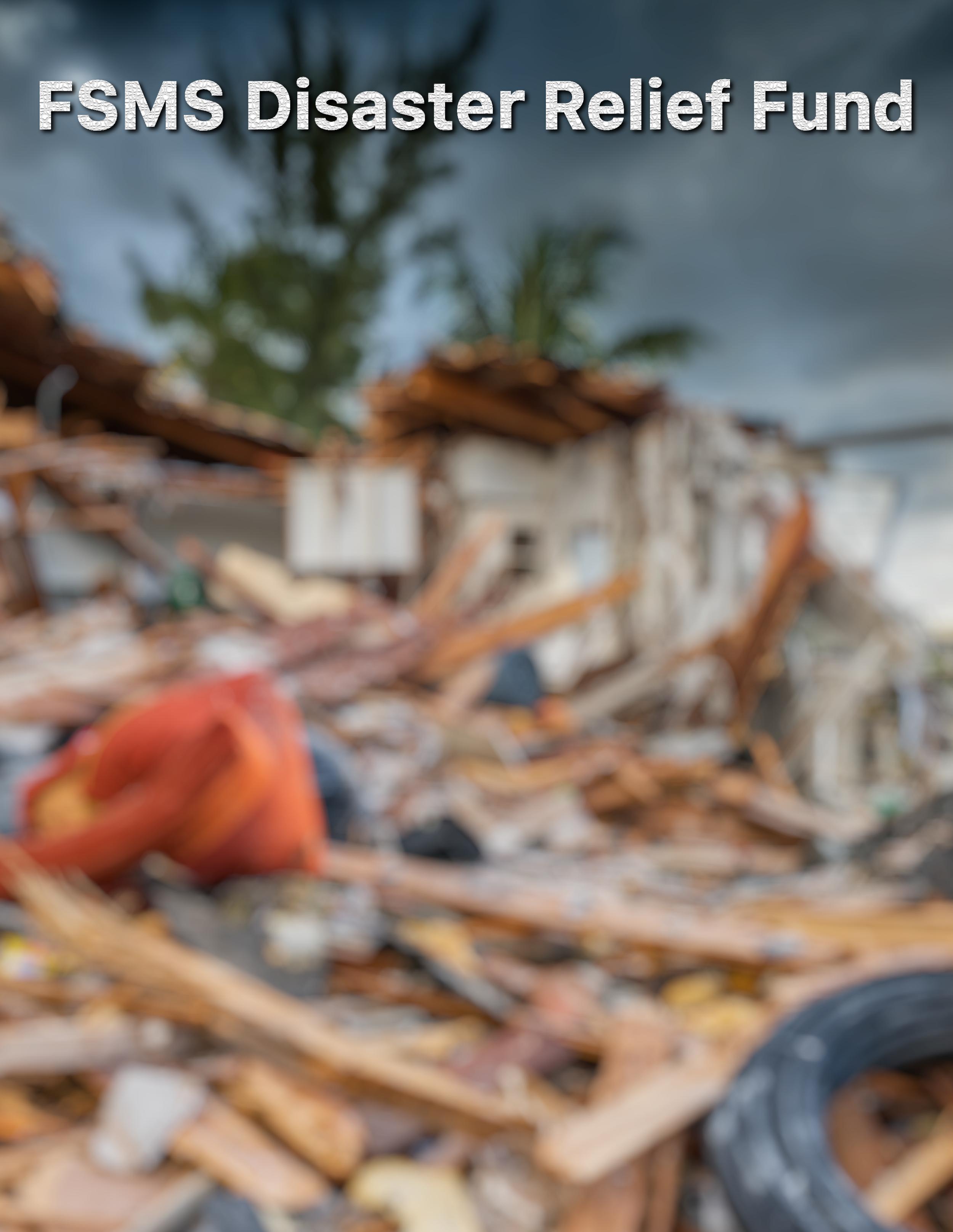
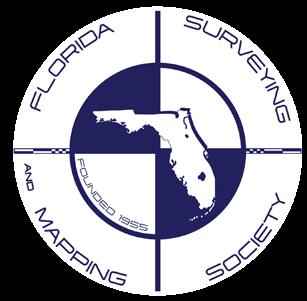
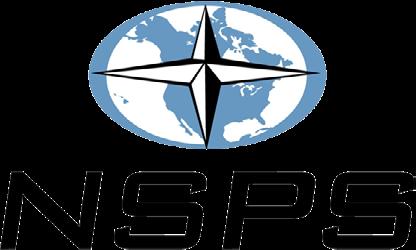
For Those Needing Assistance or Would Like to Give a Donation to Those Impacted by Hurricane Ian, FSMS has an Established Disaster Relief Fund. *The FSMS Disaster Relief Fund is solely funded by member donations and distributed to those in need after a disaster occurs. CliCk Here to Donate Online A PPLY FOR DISASTER RELIEF CliCk Here for Disaster Relief Application (Fill out & email to director@fsms.org) CliCk Here for NSPS Disaster Relief Application (Fill out & email to trisha.milburn@nsps.us.com) *Funds can go towards covering deductibles, storm supplies, minor damages and losses, gas, replenished food, etc.
County Surveyor

ABOUT ST. JOHNS COUNTY
On July 21, 1821, Andrew Jackson established St. Johns and Escambia Counties in West and East Florida, with St. Johns County encompassing all areas east of the Suwanee River. For 200 years, St. Johns County has been a place where families establish roots and where residents and visitors alike can share history.
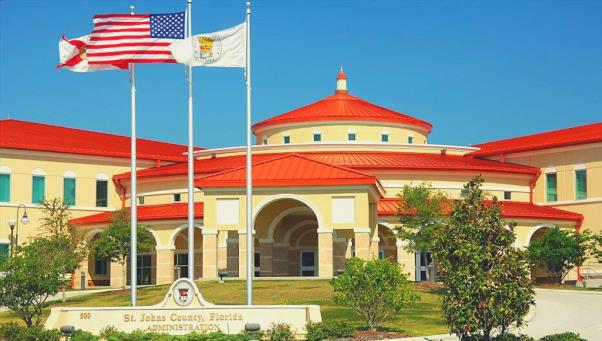
Today, St. Johns Co unty is the 10th fastest growing county in the United States. The most recent population figure is 265,512, representing an estimated 104,233 households. The County has a relatively wealthy, well educated demographic profile with a median household incom e of more than $82,000 and the second lowest unemployment rate in the state. Families benefit from its top ranked public school system and low crime rate .
Bordered by the scenic Atlantic Ocean and St. Johns River, St. Johns County embraces its historic heritage and uniquely diverse communities, which have piqued people’s interest for centuries, such as the City of St. Augustine, the nation's oldest city, St. Augustine Beach, Ponte Vedra, and Hastings, the Potato Capital of Florida.

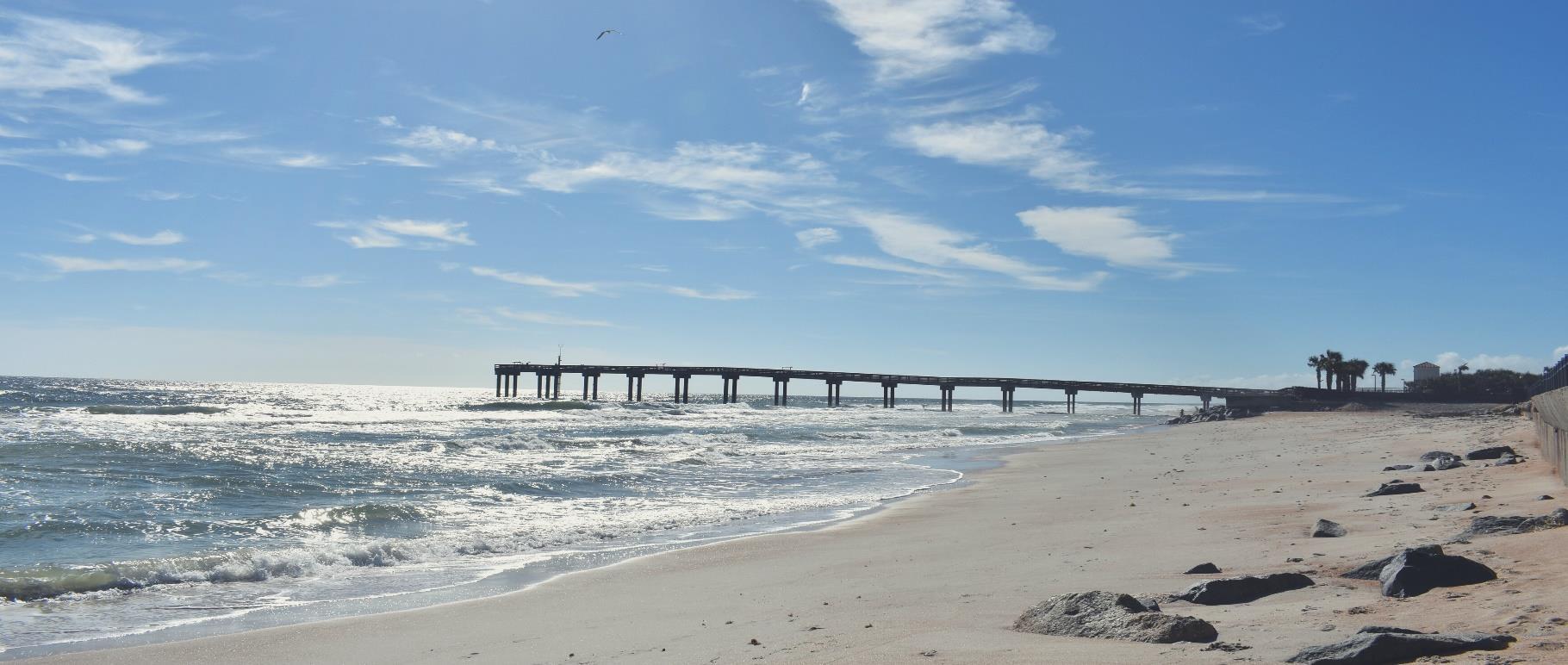
Contributing to St. Johns County’s popularity is a low overall cost of living. In addition to not having a state personal income tax, the County does not charge a local gas tax or utility franchise tax, and has a .5% local option sales tax to support schools. County real estate taxes are also the lowest in Northeast Florida with a millage of 13.3141 for residents in unincorporated areas of the County.
Exceptional quality of life, beautiful public parks, and natural waterways are just some of the amenities luring residents and businesses. Area enthusiasts enjoy numerous outdoor recreational activities such as golf, tennis, boating, fishing, and musical entertainment at the nationally recognized St. Augustine Amphitheatre. Shopping, dining, arts and, culture are als o on the list of things to experience.
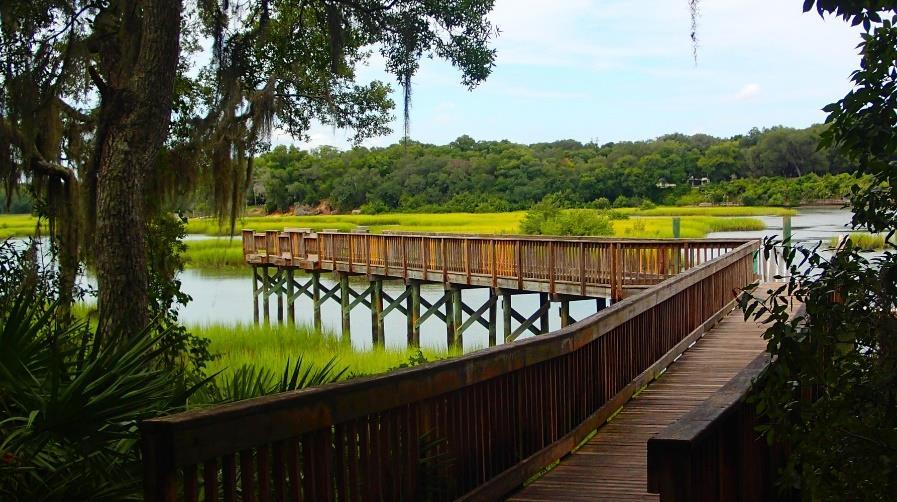
County Surveyor POSITION IN BRIEF
The Surveying and Mapping Division, a division of Land Management Systems Department , provides project and geodetic surveying services to various County programs and departments. This position is responsible for overseeing the projects and signing and sealing all surveys, maps, and reports. Project surveying may include boundary, topographical, right of way, as built, and construction surv eys.
The County Surveyor interacts with internal staff and external clients to provide professional guidance on surveying matters, interpreting and advising Florida Statutes, Florida Administrative Code, the C ounty Land Development Code, and surveying standards and practices. The County Surveyor is called upon to provide expert opinions and testimony and reviews proposed plats for compliance with Chapter 177, Florida Statute and certifying such review on the f ace of the plats.
The Surveying and Mapping Division consists of the County Surveyor , a Survey Manager, a Sr. CAD Technician and two field crews .
The Florida Surveyor
B o a r d o f C o u n t y C o m m i s s i o n e r s S t. J o h n s C o u n t y, F l o r i d a
EDUCATION AND EXPERIENCE
Surveyor
Knowledge and level of competency
to the occupational
•
possess current registration
Professional
knowledge, skills, abilities:
with the completion of a baccalaureate degree in a course of study
the Florida State Board of Professional Surveyors and Mappers.


and functions of the subunits in the division/department
Experience sufficient to thoroughly
to
to seven years of related
COMPENSATION AND BENEFITS
and
division/department, usually interpreted to
Additional Benefits
national
veteran status,
County
candidates should possess the following education, experience, and preferred traits,
•
commonly associated
related
field.
Must
as a
Surveyor by
•
understand the diverse objectives
in order
direct
coordinate work within the
require five
experience.
Employee Benefits Employee and Dependent Health Insurance Employee Life Insurance and AD&D Long Term Disability Retirement Participation in the Florida Retirement System Optional Deferred Compensation 457(b)
Medical and Dependent Flex Spending Accounts Voluntary and Dependent Life Insurance Employee Wellness Programs Annual Leave 10 vacation and 12 sic k days per year 12 paid holidays per year, plus birthday QUALIFIED CANDIDATES ARE INVITED TO APPLY ONLINE AT www.governmentjobs.com/careers/sjcfl before October 13th, 2022. The St. Johns County Board of County Commissioners, Florida, is an Equal Opportunity Employer. All employment actions are taken without regard to race, color, religion, sex, sexual orientation, gender identity or expression, age, handicap, disability, marital status,
origin,
or genetic information.
t h e f l o r i d a s u r v e y i n g a n d m a p p i n g s o c i e t y h a s s e r v e d t h e s t a t e o f f l o r i d a f o r o v e r 6 0 y e a r s d e d i c a t i n g i t s e f f o r t t o m a k i n g a d i f f e r e n c e w i t h i n t h e c o m m u n i t y e a c h l o c a l c h a p t e r r e s i d e s i n .












o u r m i s s i o n i s t o e x p a n d o u r c o m m u n i t y o u t r e a c h t o h e l p p r o v i d e s c h o o l s u p p l i e s f o r c h i l d e r n i n n e e d a n d c o n t i n u e p r o v i d i n g c h r i s t m a s g i f t s a n d h o l i d a y d i n n e r s t o f a m i l i e s w i t h i n l e e a n d c o l l i e r c o u n t y

( 3 ) S l o t A v a i l a b l e ( 2 $ 1 , 0 0 0 s l o t s a n d 1 $ 5 0 0 s l o t ) I n c l u d e s t a b l e d i s p l a y s i g n s o n e a c h t a b l e a s w e l l a s o n t h e f o o d t a b l e







( 1 ) S l o t A v a i l a b l e I n c l u d e s o n e ( 1 ) k o o z i e w / c o m p a n y l o g o p e r p a r t i c i p a n t , d r i n k t i c k e t s t o d i s p l a y c o m p a n y l o g o a n d a b a n n e r t o b e d i s p l a y e d a t d r i n k s t a t i o n ( C o m p a n y t o p r o v i d e u s w i t h b a n n e r )








( 2 8 ) C a r t s I n c l u d e s o n e ( 1 ) 8 5 " x 2 0 " c o l o r l o w t a c s i g n t o b e d i s p l a y e d o n t h e f r o n t o f e a c h g o l f c a r t
( 1 ) S l o t A v a i l a b l e T i c k e t s t o d i s p l a y c o m p a n y l O G O a n d t a b l e d i s p l a y t o b e d i s p l a y e d w i t h r i f l e
( 1 4 ) S l o t s A v a i l a b l e I n c l u d e s o n e ( 1 ) 1 8 " x 2 4 " c o l o r s i g n

Originally Published on Geo Week News, August 12, 2022
The Geospatial Industry's Key Place in the Metaverse
by Matt Collins
GIS data will play a big role in both the development and usage of the eventual metaverse
When starting to learn about any new topic, especially something as large in scope as the theoretical “ metaverse, ” the obvious place to start is simply with the definition. That proves to be a bit of a problem in this case, though, because the most common answer you’ll find is that no one really has a definition. There are disagreements from people involved in metaverse development in all phases on things from what the metaverse will look for, how many there will be, or even if it’s already here. Most commonly, the broad explanation is that the metaverse is the next phase of the internet, a 3D representation of it, following the personal computer era of the late 1980s, 1990s, and 2000s, moving on to the mobile internet era of the 2010s to today.
At a metaverse panel earlier this year at the Geo Week Conference, Brey Tucker of Autodesk likened the idea of marrying physical mail to email. So, the metaverse is the next stage, and similar to a person in the 1970s trying to predict what the internet would be like, there are a wide range of specific predictions for the metaverse, some of which will turn out to be correct, others not so much.

The Florida Surveyor Page 11
That being said, there are a couple of key truths that form an important basis for what’s coming next. One is that 3D technology is going to be the backbone of whatever it is the metaverse turns into. Additionally, there is going to be a lot of data involved, and coming from a variety of sources, and even a variety of types of sources. And third, the geospatial industry is going to play a huge role in the development and functionality of these virtual worlds. The good news is, the industry is getting involved right from the start as key players in the development. As Nadine Alameh, CEO of the Open Geospatial Consortium, put it in her appearance on the Building the Open Metaverse Podcast , geospatial is the representation of everything happening in time and space. Those same principles exist in virtual time and space as well, making GIS data and geospatial professionals key for any discussion around the metaverse.
Location, Location, Location
Although exact definitions around the metaverse are still very much up in the air, one of the things most everyone involved agrees with is that users will be placed in virtual rules – sometimes in VR, but not always – which means that spatial data will be key. Consider the idea of commerce in the metaverse, with virtual shops that can be visited by digital avatars who are physically in different places. A lot of this will be based on real-world locations too, with at least part of it consisting of exact copies of our planet. For that to be accurate, experts in mapping the real world are going to need to be involved in mapping the digital version to ensure everything works as intended.
It’s not just the development of this metaverse where geospatial professionals are going to be key, though. For one thing, that development never really ends, as anything that mirrors the real world is going to be constantly updating just as our physical environment is. And even in virtual environments not entirely based on real world ones, many of the same spatial principals will still be in play, and geospatial professionals will have an upper hand in being able to interpret and take advantage of the data available. For example, virtual real estate is likely to be a very important part of the metaverse, especially in commercial contexts. Just like in our physical world, location is going to be extremely important for companies to maximize their return on virtual real estate investments, and many will certainly be willing to pay up front for the best location possible. As Jeran Miller, a realtor with a GIS background, points out, software using GIS data can create a map of even a virtual area and factor in key information like “ foot traffic, parcel values, and proximity to related businesses, ” in order to find the ideal location for a potential customer. Miller also mentions in his blog the eventual need for virtual geography researchers.
October 2022 Page 12
the help of Frontier Precision, places you once couldn’t imagine measuring are now a daily reality. Frontier Precision leads the way in Unmanned technology

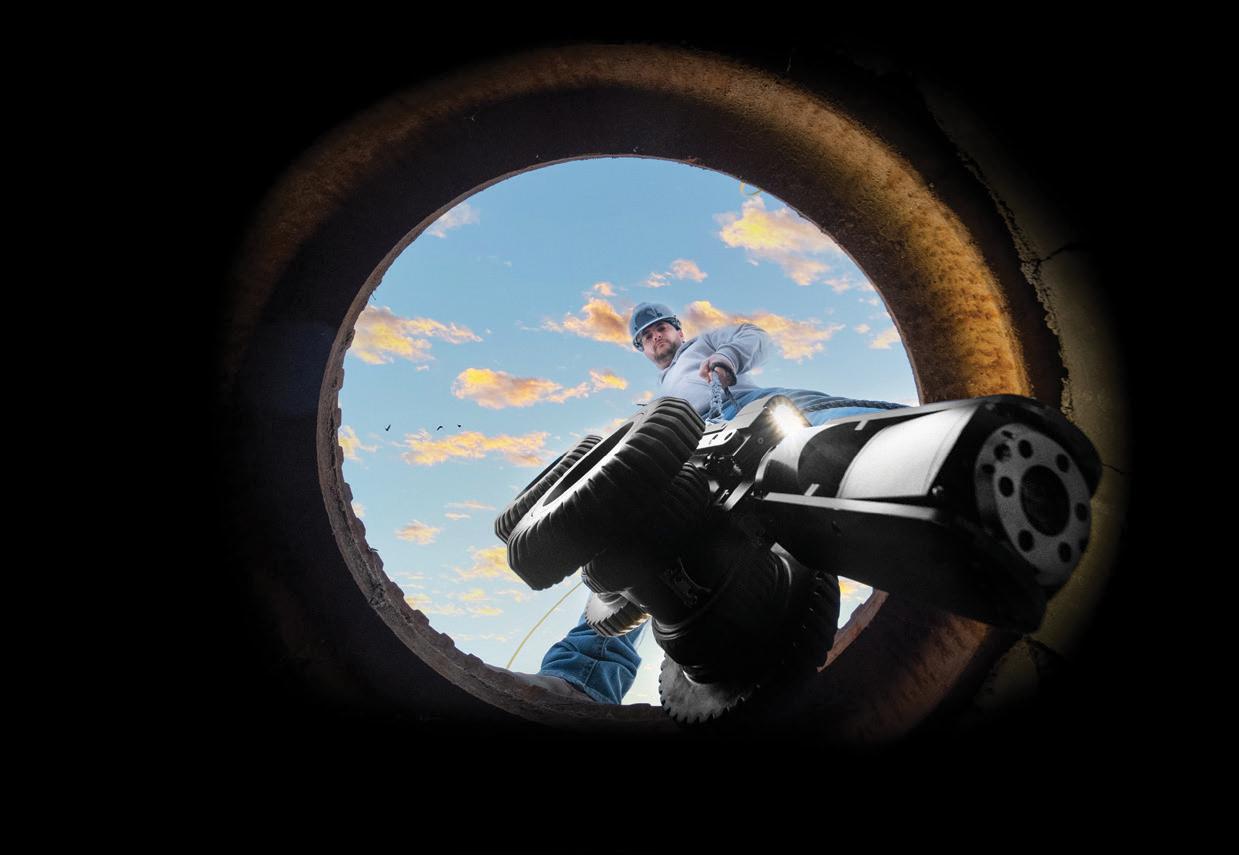
through the air, land, and underwater. Every place on earth is now reachable
Autel, Parrot, Ascent, and ROVs,

to
while
the latest
and
no
help you get
out
with UAS from
job done
LAND WATER With
–
–
DJI,
Pipe Crawlers,
Utility Crawler solutions from Deep Trekker. Count on us
deliver
technology to
your
e ciently and accurately
driving your profits. Today,
mission is
of reach. FRONTIER PRECISION | JACKSONVILLE 8301 Cyprus Plaza Drive, #107 Jacksonville, FL 32256 FIND OU T M O RE A T : W W W .FRO N T IE RPRE C IS I ON.CO M / U N M A NN E D P R O DUCTS | T R AINING | RE PAIR | REN TA L S | T ECHNI C A L SE R VICE S AIR
Digital Twins are the backbone
Given that at least one vision of the metaverse involves either an exact or at least near-exact replica of our real world, it makes sense that the concept of digital twins is going to be heavily involved in this development as well. Digital twins was at one point considered simply a buzzword in the AEC industry, but the concept is quickly being recognized as a significant value–add for those that take advantage. As a reminder, and as we talked about recently with Dr. Qassim Abdullah, digital twins are not simply a 3D model of a physical building or other asset, but rather a living, breathing model utilizing things like Internet of Things (IoT) sensors to provide real-time updates to the environment of the physical twin.
The use cases of these digital twins are going to be important for both public and private entities. On the private side, it is really a lot of the things that we already see in this space, just on a potentially larger sale. Building owners and facility managers can both spot in real-time potential issues with things like piping systems earlier than they would without the digital twin thanks to the IoT sensors, and they can also run simulations for future events using the information gleaned from sensors in concert with artificial intelligence and machine learning.

That same principle can also be used on a larger scale by governments at all levels. Using the geospatial data discussed above to create digital twins of streets, cities, states, nations, and even just the Earth at larger eventually, public entities can


October 2022 Page 14
theoretically simulate things like climate events, which are expected to become more commonplace, both figuring out potential consequences and simulating potential ways to minimize the damage from such events. Alameh brought this up in a conversation with us around the geospatial industry’s role in the metaverse, providing the example of simulating a flood before it happens.
“ If we can just see it in the metaverse, if we can see floods — not fake, not Hollywood, based on real scientific models and data, and historical data and predictions and you know, all this stuff that the experts do — then the decision makers can see it. You stand, you see where the water is coming. You see how many bridges are affected and how much they cost. ”
Openness is Key
As discussed earlier, there is still a lot unknown around the idea of a metaverse, and nobody is really clear on what exactly it will look like, one thing that most everyone agrees with is that there will be a massive amount of data needed for creation and continued development of this virtual space (or spaces), geospatial and otherwise. And building from that, it’s also clear that no one company or person is going to be able to harness, never mind possess, all of this data themselves. It is going to need to be a collective effort with a lot of different entities and industries being able to share information and data seamlessly. That will require open standards that are followed by different industries to maximize collaboration of tools and software. This led to the creation of The Metaverse Standards Forum , which is not a standards developer but a forum for many different organizations to work together to create standards themselves. The OGC is one of the founding members of the organization.
Alameh points out some of the early signs that this may work with the examples of geospatial companies partnering with gaming companies, combining the GIS data with high-quality 3D representation that comes from games. We see that with Cesium and Epic Games – which also helped lead to the aforementioned Building the Open Metaverse Podcast with hosts Cesium CEO Patrick Cozzi and VP and General Manager of the Unreal Engine at Epic Games Marc Petit – and more recently Esri announced a new integration for their data to be visualized using the Unreal Engine as well as Unity’s gaming engine. Alameh, speaking of the geospatial industry, indicates that they have “ half the metaverse right here, ” referring to their crucial spatial data. Merging that other half with other relevant industries seamlessly and openly is going to be the other key if the metaverse is going to be as impactful as it has the potential to be.
The Florida Surveyor Page 15

Why Join FSMS?
LegisLative support –
The Legislative Committee and our Lobbyist are committed to keeping the Public and the Surveying and Mapping Profession protected
educationaL Benefits –
With recently updated courses, getting your CECs has never been better networking –Attend our Annual Conference to meet other professionals and meet vendors with all the latest equipment
sociaL Benefits –
Attend local chapter meetings to meet individuals with common professional goals
CLICK HERE TO JOIN!
Florida Surveying & Mapping Society
1689 Mahan Center Blvd. Suite A Tallahassee, FL 32308 www.fsms.org (850) 942-1900

The Florida Surveyor Page 17 Aug/Sept 2021 30

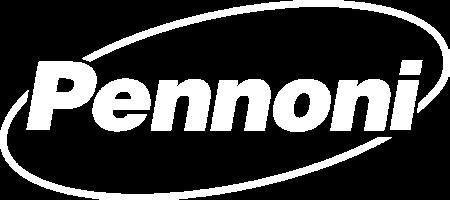
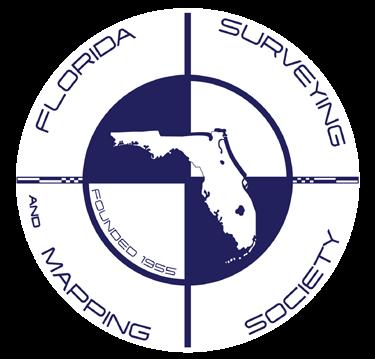
• Civil/Site Design • Construction Engineering • Construction Materials Engineering & Testing • Energy • Environmental, Health, and Safety • Geotechnical • MEP • Structural • Survey & Geospatial • Transportation • Urban Planning & Design • Water Resources • Water/Wastewater PARTNERS FOR WHAT’S POSSIBLE www.pennoni.com Join our Survey Team in Florida today! The End of the Biennium is on February 28, 2023! • This is the deadline for License Renewal. • Licensed Surveyors are Required to have Completed at least 24 Continuing Education Credit Hours. Need Continuing Education Credits? (Click Here) FSMS Full/Government Members get a Voucher towards any 3 Hour Course of Your Choice. To Claim Your Voucher, Contact our Education Director Samantha Hobbs at education@fsms.org .
2022 eLearning Courses
General CEC - $99/course (members)
General CEC - $49/course (members)
(non-members)
Professional Ethics & Professional
- Course #8363
Basics of Real Property
Course #8360
Contracts for the Professional
Course #8554
Georgia Technical Standards for Property Surveys
History of Surveying
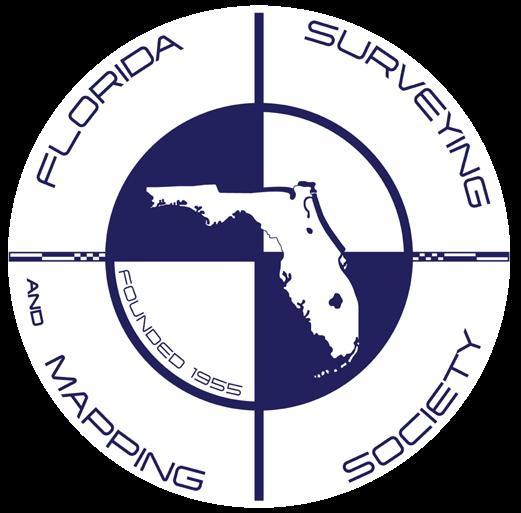
Course #7140
Identification of Native & Non-Native Trees in Florida
Course #8132
Ethics for the Design Professional
Course #8621
Land Tenure & Cadastral Systems
Course #8260
Projections & Plane
Systems
Course
Mean High Water Observations
Course
Public Land Survey System
Course #7147
Remote Sensing Applications to Surveying & Mapping
Course #7148
Practical Geometry for Surveyors
Course #7141
Course #8412
Elevation Certificates & the Community Rating System
Course #8256
Introduction to Photogrammetry
Course #7968
Writing Boundary Descriptions
Course #8362
Surveying & Mapping Society
Mahan Center Blvd. Suite A Tallahassee, FL 32308
(850) 942-1900
The Florida Surveyor Page 19
6
$120/course (non-members) •
Courtesy
•
-
•
-
•
-
•
-
•
-
• Map
Coordinate
-
#8261 •
& Computations -
#8262 •
-
•
-
•
-
3
$70/course
•
-
•
-
•
-
•
-
•
-
Florida
1689
www.fsms.org
Surveying and Mapping
Hour Courses Available
Step 1: Choose Course(s)
Hour Courses
Florida
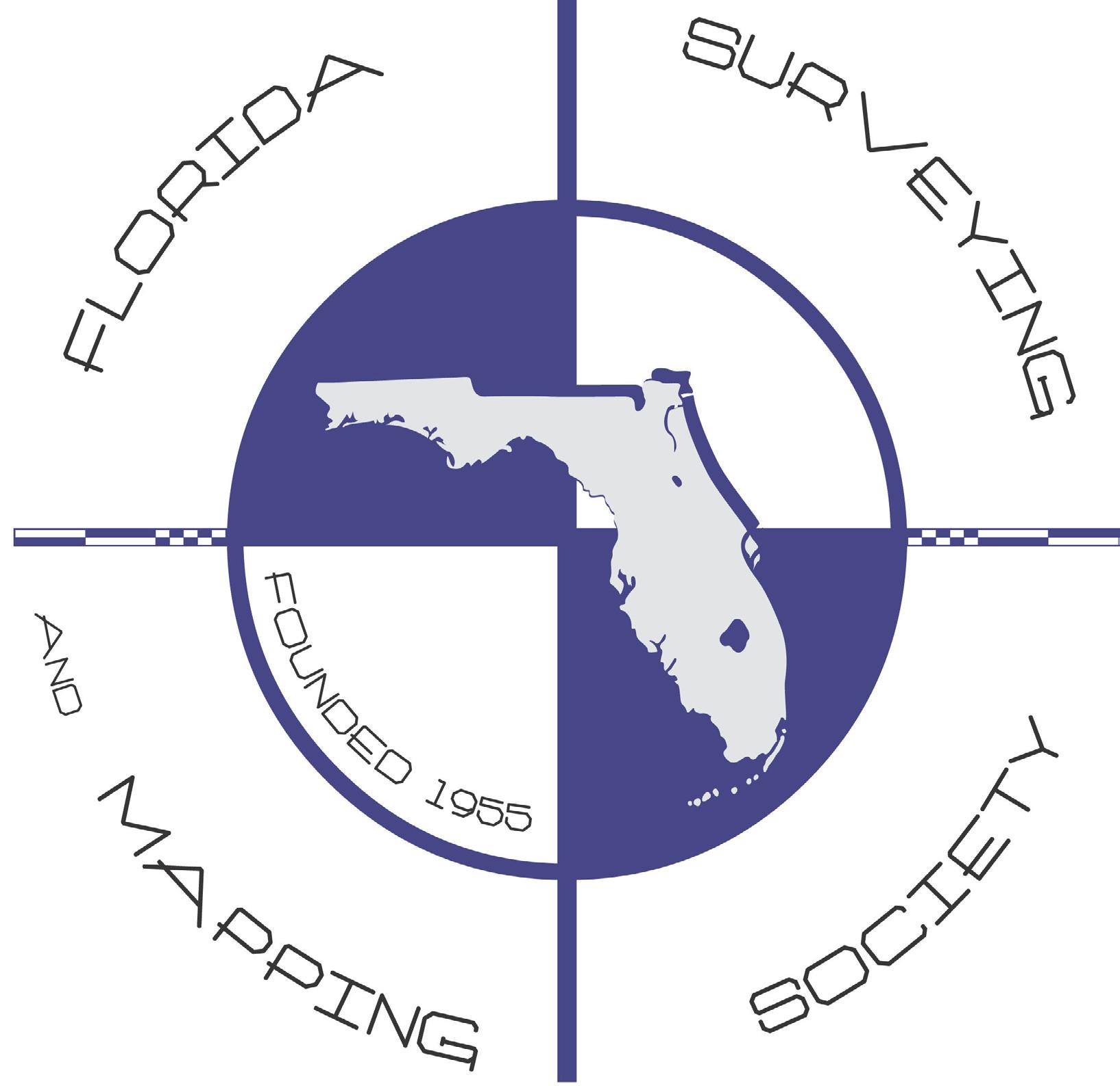
177, Platting
Law)
Communication for Surveying
for the Design Professional
Laws
Mapping
Surveying Law and Rule Changes
Information Systems (GIS)
of Surveying,
of Native and Non-Native
Tenure and Cadastral Systems
Projections and Plane
Geometry for Surveyors
Land Survey System
Sensing
Systems
October 2022 Page 20
Florida
Continuing Education Provider Offering 25 Years of Dedication, Quality & Trusted Services 3
□ A History of the Prime Meridian Marker, □ Basics of Real Property □ Digital Signatures for Surveyors □ Easements and Rights of Ways, □ Elevation Cert *2020 UPDATED COURSE □ Introduction to Photogrammet □ Quality Assurance/Quality Cont , #9293, 3 CEC □ Writing Boundary Descriptions 6
□ Identification
Trees in Florida □ Boundaries in
□ Chapter
(Plat
□ Critical
&
Professionals □ Ethics
□ Florida
□ Florida
□ Geographic
□ History
□ Land
□ Map
Coordinate
, #7669, 6 CEC □ Practical
, #7109, 6 CEC □ Public
, #6979, 6 CEC □ Remote
Applications to Surveying & Mapping, #6972, 6 CEC *2020 UPDATED COURSE
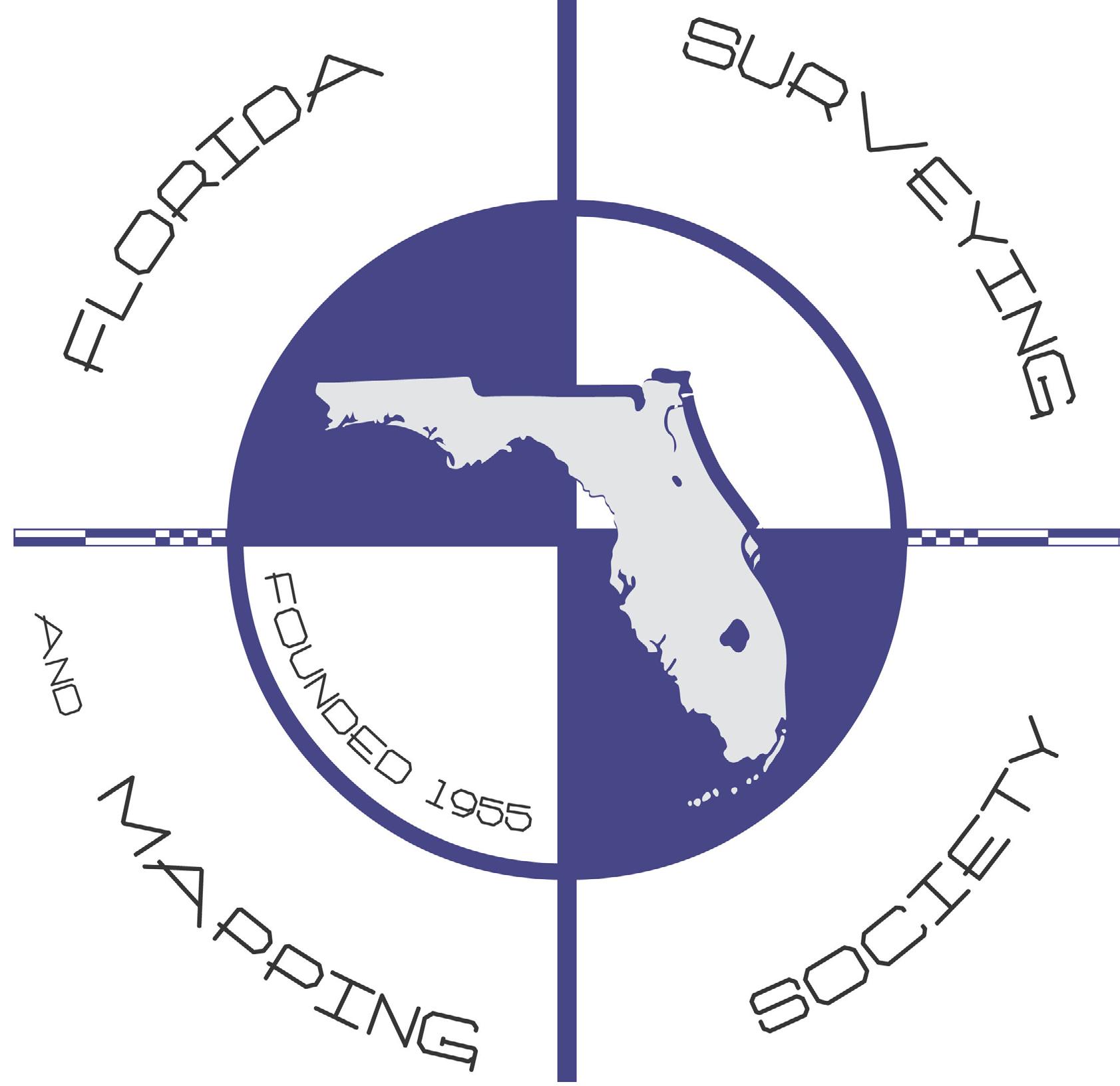
The Florida Surveyor Page 21 Step 2: Choose Member TypeFSMS Member EMAILED Fee Quantity Amount 6 CEC $115 Per Course x = $ 3 CEC $58 Per Course x = $ MAILED 6 CEC $125 Per Course x = $ 3 CEC $68 Per Course x = $ TOTAL $ Non Non Name: _ YES _ NO Firm: ____ _ YES _ _ NO Address: ______________________________________________________________________________________ City/State: Email Address: Work Phone: Payment Information: ___ Check Enclosed (Payable to FSMS) _ VISA/MasterCard/American Express Card #: _______ Exp. Date: __ CVV Code:___________ Billing Address of Credit Card: ______________________________________ Signature: _____________________________________ __ IF PAYING BY CHECK, MAIL FORM TO: FSMS, P.O. Box 850001-243, Orlando, Florida 32885-0243 IF PAYING BY CREDIT CARD, FAX OR EMAIL FORM TO: 850.877.4852 education@fsms.org QUESTIONS? CALL 800.237.4384 Provider No. CE11 fsms.org
h Anniversary”

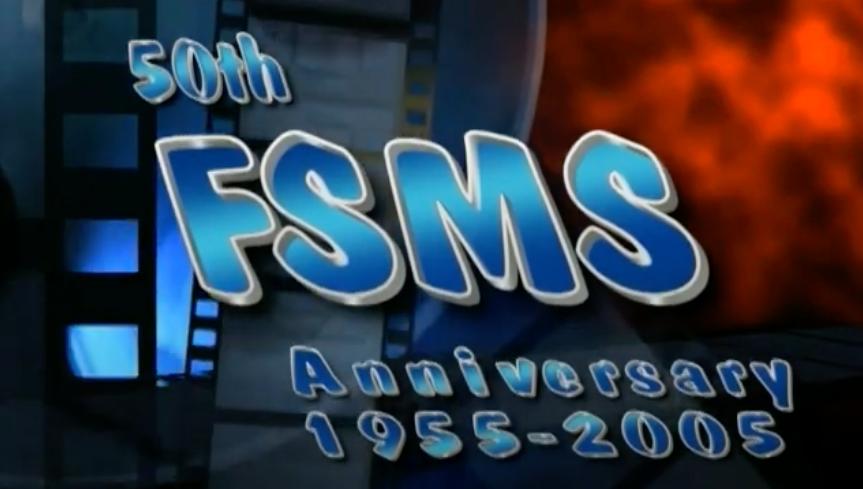

October 2022 Page 22 “50 t
1955-2005
Potential Effects of Operating a Terrestrial Radio Network Near GPS Frequency Bands Assessed by New Report News Release September 9, 2022
WASHINGTON — A new congressionally mandated report from the National Academies of Sciences, Engineering, and Medicine assesses the likelihood of harmful interference from Ligado Networks’ authorized use of the radio frequency spectrum near bands used by GPS and other satellite services.
The report says use of radio frequency bands — as authorized by the Federal Communications Commission in its 2020 order — by Ligado Networks, a private satellite communications company, will not cause most commercially produced general navigation, timing, cellular, or certified aviation GPS receivers to experience harmful interference. However, some high-precision receivers, used for applications such as farming, geodesy, and surveying and sold before about 2012, can be vulnerable to significant harmful interference. In addition, certain mobile satellite services provided by Iridium Communications Inc. and used by the U.S. Department of Defense and others will experience harmful interference under certain conditions.
The committee that wrote the report reached these conclusions from its review of signal transmission and reception physics and engineering pertaining to devices working in the spectrum region in question, as well as from publicly available interference tests evaluating various operating scenarios and representative devices.
The radio frequency spectrum is a natural resource that underpins all wireless activity, from mobile phones to GPS and satellite communications. The spectrum is divided into frequency bands, each allocated for specific services and managed in the United States by two agencies — the Federal Communications Commission and the National Telecommunications and Information Administration. While strict adherence to transmission and reception only within authorized frequency bands would provide protection against harmful interference, in practice transmitters do not have sharp

The Florida Surveyor Page 23
cutoffs and may emit signals beyond their authorized frequencies, and receivers may pick up frequencies beyond their authorized range. Both of these factors can potentially contribute to interference that degrades performance or causes loss of operation.
Due to the commercial, economic, and national security interests involved, and questions over whether signals from Ligado transmitters could create adverse effects including the disruption of critical services, Congress, through the DOD, requested a study from the National Academies. The committee’s statement of task did not include consideration of whether the FCC reached a correct outcome in authorizing the Ligado system.
Manufacturers are technologically capable of building new GPS receivers that are robust enough to withstand interference from Ligado Networks’ signals, the report says. The installation of new antennas and electronics, as well as the extension of exclusion zones in which Ligado would not be permitted to operate, offer other potential avenues for mitigating harmful interference. In some cases, though, these mitigation procedures may not be practicable at relevant time scales or reasonable costs due to test certifications and other efforts required.
Additionally, the report finds that neither of the two prevailing approaches for evaluating harmful interference concerns in the radio spectrum effectively mitigates the risk of harmful interference. While assessments of positional accuracy degradation and signal-to-noise ratio reduction both have a role to play, there are multiple ways in which interference can degrade receiver operations that are not considered by these two approaches. These approaches also require cumbersome device-by-device testing, and lack analytical, repeatable, and straightforward criteria, thus impeding progress in making more efficient and effective use of the spectrum.
The report says that a more collaborative approach to resolving spectrum issues, joint study and testing by the FCC and NTIA of proposed changes to spectrum use, more definitive receiver performance standards, and the establishment of specific timespans where adherence to those standards will ensure successful operation are

October 2022 Page 24
Originally Published by The National Academies of Sciences, Engineering, and Medicine — September 9, 2022
all important tools for the future of the sector.
“ Our technological capabilities in this space are constantly evolving, so spectrum real estate should be seen as a living asset that evolves alongside new technologies, ” said J. Michael McQuade, strategic adviser to the president at Carnegie Mellon University and chair of the committee. “ But to ensure stability, approaches must also allow for a degree of confidence that a deployed system will not be compromised, for a time, by harmful interference from new entrants. ”
The committee evaluated “ harmful interference ” as related to relevant physics and engineering questions, using the term in a general sense to imply degraded receiver operations. It did not assess whether “ Harmful Interference ” as defined by U.S. or international regulations, which include language pertaining to assessments of the consequences of the interference, might occur.

A classified annex to the report provides further information on the test results and analysis as they relate to DOD systems and missions.
The study — undertaken by the Committee to Review FCC Order 20-48 Authorizing Operation of a Terrestrial Radio Network Near the GPS Frequency Bands — was sponsored by the U.S. Department of Defense. The National Academies of Sciences, Engineering, and Medicine are private, nonprofit institutions that provide independent, objective analysis and advice to the nation to solve complex problems and inform public policy decisions related to science, technology, and medicine. They operate under an 1863 congressional charter to the National Academy of Sciences, signed by President Lincoln.
The Florida Surveyor Page 25

2022 Sustaining
Barraco & Associates, Inc.
Surveying
Trail
Inc.
& Bello
Surveying
Bowman Consulting Group
& Associates, Inc.
Geospatial
& Land Planning, Inc.
& Phillips, Inc.
Inc.
Lindsay, Inc.
& Harper, Inc.
Giordano, & Associates
Engineering
Inc.
and
Land
Inc.
& Clark
Environmental
PC
Associates, Inc.

3002 Surveying 833-352-3002 A Accuright Surveys of Orlando, Inc. 407-894-6314 Agnoli, Barber & Brundage, Inc. 239-597-3111 AIM Engineering & Surveying 239-332-4569 Airworks 857-990-1060 Allen & Company, Inc. 407-654-5355 Allen Engineering 321-783-7443 American Consulting Professionals, LLC. 813-435-2600 American Surveying, Inc. 813-234-0103 Amerritt, Inc. 813-221-5200 Arc
& Mapping, Inc. 904-384-8377 Ardurra, Inc. 239-292-7773 Associated Land Surveying & Mapping, Inc. 407-869-5002 Atlanic Drafting & Surveying 386-264-8490 Avirom & Associates, Inc. 561-392-2594 Axis
SE, LLC. 410-822-1441 B Banks Engineering 239-939-5490 Barnes, Ferland and Associates, Inc. 407-896-8608
239-461-3170 Bartram
Surveying,
904-284-2224 Bello
Land
Corporation 305-251-9606 Benchmark Surveying
850-994-4882 Berntsen International 608-443-2772 Betsy
772-286-5753 Biscayne
Company,
305-324-7671 Boatwright
Durden
Surveyors,
904-241-8550 Bock
Corporation 330-665-4821
703-454-1000 Bradshaw-Niles
904-829-2591 Brown
561-615-3988 BSE Consultants,
321-725-3674 Buchanan
850-763-7427 C Calvin,
954-921-7781 Carlson
Consultants,
561-371-2402 Carter
772-562-4191
Firms Directory
Caulfield & Wheeler 561-392-1991 Chastain-Skillman, Inc. 863-646-1402 CHW Professional Consultants (Causseaux, Hewett & Walpole, Inc.) 352-331-1976
CivilSurv Design Group, Inc. 863-646-4771 Clary & Associates, Inc. 904-260-2703 Clements Surveying, Inc. 941-729-6690 Clymer Farner Barley, Inc. 352-748-3126 Coastal Engineering Associates, Inc. 352-796-9423 Colliers Engineering & Design 732-383-1950
Collins Survey Consulting, LLC. 863-937-9052 Compass Engineering & Surveying, Inc. 727-822-4151
Cousins Surveyors & Associates, Inc. 954-689-7766 CPH Consulting, LLC 407-322-6841 Craven-Thompson & Associates, Inc. 954-739-6400
Cross Surveying, LLC. 941-748-8340 Culpepper & Terpening, Inc. 772-464-3537 Cumbey & Fair 727-324-1070
D
Dagostino Geospatial, Inc. 239-352-6085
DeGrove Surveyors, Inc. 904-722-0400
Dennis J. Leavy & Associates 561-753-0650 Dewberry 321-354-9729
DMK Associates, Inc. 941-475-6596
Donald W. McIntosh Associates, Inc. 407-644-4068
Donoghue Construction Layout, LLC. 321-248-7979
Douglass, Leavy & Associates, Inc. 954-344-7994 DRMP, Inc. 407-896-0594
DroneView Technologies 248-321-9417
DSW Surveying & Mapping, PLC. 352-735-3796 Duncan-Parnell, Inc. 407-601-5816 Durden Surveying & Mapping, Inc. 904-853-6822
E

Echezabal & Associates, Inc. 813-933-2505
ECHO UES, Inc. 888-778-3246
Eda Consultants, Inc. 352-373-3541 E.F. Gaines Surveying Services, Inc. 239-418-0126 Eiland & Associates, Inc. 904-272-1000
2022 Sustaining
F

FTE Engineers & Planners
Germaine
Inc.
Geospatial, Inc.
Gary Allen
Surveying
Cothern & Tucker, Inc.
Ward, Inc.
Professional Services, Inc.
Walter & Associates, Inc.
Bennett & Associates, Inc.
Montes, Inc. 239-254-2000
International
Element Engineering Group, LLC. 813-386-2101 Engenuity Group, Inc. 561-655-1151 Engineering Design & Construction, Inc. 772-462-2455 ER Brownell & Associates, Inc. 305-860-3866 ESP Associates FL, Inc. 813-295-9024 ETM Suryeying & Mapping 904-642-8550 Exacta Land Surveyors, Inc. 866-735-1916 EXP Energy Services Inc. 305-213-9969
Ferguson Land Surveyors 727-230-9606 First Choice Surveying, Inc. 407-951-3425 Florida Design Consultants, Inc. 727-849-7588 Florida Engineering & Surveying, LLC. 941-485-3100 FLT Geosystems 954-763-5300 Fortin, Leavey, Skiles, Inc. 305-653-4493 F.R. Aleman & Associates, Inc. 305-591-8777 Frontier Precision Unmanned 701-222-2030 F.R.S. & Associates, Inc. 561-478-7178
800-639-4851 G
Land
850-877-0541 GCY, Inc. 772-286-8083 GeoData Consultants, Inc 407-732-6965 Geoline Surveying 386-418-0500 Geomatics Corporation 904-824-3086 Geo Networking, Inc. 407-549-5075 GeoPoint Surveying, Inc. 813-248-8888 George F. Young 727-822-4317 GeoSurv, LLC. 877-407-3734
Surveying,
863-385-6856 GPI
407-851-7880 Gustin,
850-678-5141 H Haley
239-481-1331 Hanson
217-788-2450 Hanson,
407-847-9433 H.L.
863-675-8882 Hole
HUB
850-386-1111
Firms Directory

Hyatt Survey Services 941-748-4693 I I.F. Rooks & Associates, LLC. 813-752-2113 J John Ibarra & Associates, Inc. 305-262-0400 Johnson, Mirmiran & Thompson, Inc. 813-314-0314 Johnston’s Surveying, Inc. 407-847-2179 K KCI Technologies 954-776-1616 Keith and Associates, Inc. 954-788-3400 Kendrick Land Surveying 863-533-4874 L L&S Diversified, LLC. 407-681-3836 Land Precision Corporation 727-796-2737 Landmark Engineering & Surveying Corporation 813-621-7841 Langan Engineering 973-560-4900 Leading Edge Land Services, Inc. 407-351-6730 Leiter Perez & Associates, Inc. 305-652-5133 Lengemann Corp. 800-342-9238 Leo Mills & Associates 941-722-2460 LiDARit Inc. 407-946-1398 LiDAR USA 256-274-1616 Long Surveying, Inc. 407-330-9717 M Manuel G. Vera & Associates, Inc. 305-221-6210 Marco Surveying & Mapping, LLC. 239-389-0026 Massey-Richards Surveying & Mapping, LLC. 305-853-0066 Masteller, Moler & Taylor, Inc. 772-564-8050 McCain Mills, Inc. 813-752-6478 McKim & Creed, Inc. 919-233-8091 McLaughlin Engineering, Co. 954-763-7611 Metron Surveying and Mapping, LLC. 239-275-8575 Metzger + Willard, Inc. 813-977-6005 Midwest Aerial 614-853-2902 Mills & Associates, Inc. 813-876-5869 Mock Roos & Associates, Inc. 561-683-3113 Moore Bass Consulting, Inc. 850-222-5678 Morris-Depew Associates, Inc. 239-337-3993 Murphy’s Land Surveying 727-347-8740
2022 Sustaining
N
R

&
& Associates
Redondo
Drotos
Navigation Electronics, Inc. 337-237-1413 Northwest Surveying, Inc. 813-889-9236 NV5, Inc 407-896-3317 O On The Mark Surveying, LLC. 321-626-6376 P PEC Surveying & Mapping 407-542-4967 Pennoni Associates, Inc. 863-594-2007 Perret and Associates, Inc 904-805-0030 Pickett & Associates, Inc. 863-533-9095 Platinum Surveying & Mapping, LLC. 863-904-4699 Point Break Surveying 941-378-4797 Polaris Associates, Inc. 727-461-6113 Porter Geographical Positioning & Surveying, Inc. 863-853-1496 Pro-Line Survey Supply, Inc. 904-620-0500 Pulice Land Surveyors, Inc. 954-572-1777 Q Q Grady Minor & Associates, PA 239-947-1144
Reece
White Land Surveying, Inc. 305-872-1348 Rhodes & Rhodes Land Surveying, Inc. 239-405-8166 Richard P. Clarson & Associates, Inc. 904-396-2623 R.J. Rhodes Engineering, Inc. 941-924-1600 R.M. Barrineau & Associates, Inc. 352-622-3133 Robayna and Associates, Inc. 305-823-9316 S SAM Surveying & Mapping, LLC. 850-385-1179 SCR
NWFL Inc. 850-527-1910 Sergio
& Associates, Inc. 305-378-4443 Settimio Consulting Services 850-341-0507 SGC Engineering, LLC. 407-637-2588 Shah
& Associates, PA 954-943-9433 Shannon Surveying, Inc. 407-774-8372 Sherco, Inc. 863-453-4113 Sliger & Associates 386-761-5385 Southeastern Surveying & Mapping Corp. 407-292-8580


Stephen H. Gibbs Land Surveyors, Inc. 954-923-7666 Stoner Inc. 954-585-0997 Strayer Surveying & Mapping, Inc. 941-497-1290 SurvTech Solutions, Inc. 813-621-4929 T T2 UES Inc. 407-587-0603 Tectonic Engineering and Surveying Consultants 800-829-6531 Thurman Roddenberry & Associates 850-962-2538 U Upham, Inc. 386-672-9515 W Wade Surveying, Inc. 352-753-6511 Wallace Surveying Corp. 561-640-4551 Wantman Group, Inc. 561-687-2220 WBQ Design & Engineering, Inc. 407-839-4300 Winningham & Fradley, Inc. 954-771-7440 Woolpert, Inc. 803-214-5928 Z ZNS Engineering, LLC. 941-748-8080 Firms Directory SOCIAL MEDIA LINKS LinkedIn = 192 Followers Facebook = 740 Followers Twitter = 318 Followers Instagram = 137 Followers YouTube
F.S.M.S. 2022 CHARITY SPORTING CLAY SHOOT

October
Check-In & Breakfast:
Shoot:

AM-1
& Lunch:
100 rounds per person
AM-9
your own gun and shells.
load
go to Community Initiatives such
shot
4-Person Team -
-
&
Station sponsorships - $150 per station
If you would like additional
or donation
please contact Chad Thurner: (850) 200-2441 | chad.thurner@sam.biz
28, 2022 Talon Range 550 Commerce Blvd Midway, FL 32343
Bring
Target
7.5-9
Proceeds
as Honor Flight
$400 Individual
$100 Breakfast
Lunch included Registration deadline: October 23, 2022
D E S i G N E D B Y
8
AM Clay
9
PM Awards
1 PM-2PM
sponsorship
opportunities

For questions & donations please contact: Chad Thurner O: (850) 385-1179 C: (850) 200-2441 chad.thurner@sam.biz TEAM APPLICATION Team Captain/Shooter 1: Email: Phone Number: Shooter 2: Shooter 3: Shooter 4: Please make checks payable to "FSMS NW Florida Chapter" Mail to FSMS NW Florida Chapter Attn: Chad Thurner 2844 Pablo Ave, Tallahassee, FL 32308 Please bring your own gun and shells. Target load 7.5-9. Registration deadline: October 23, 2022
ARCHIVES FROM THE
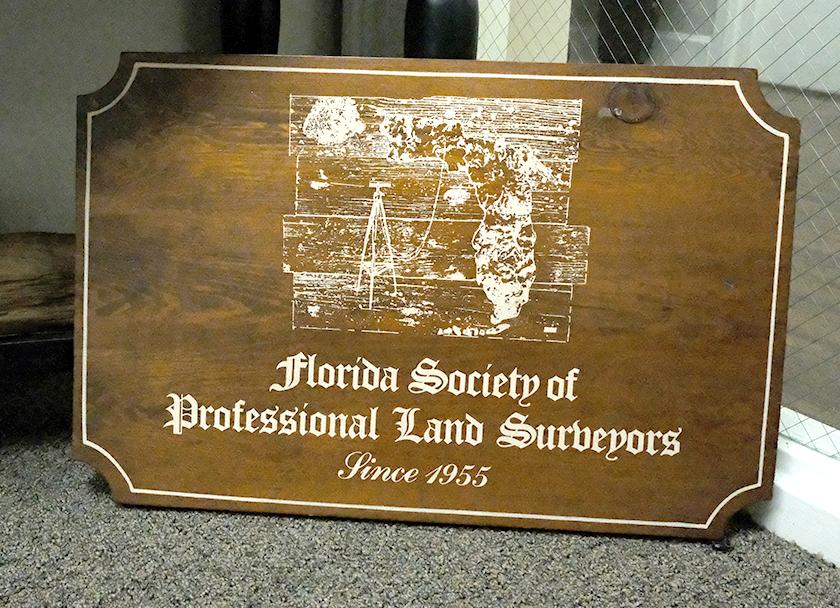

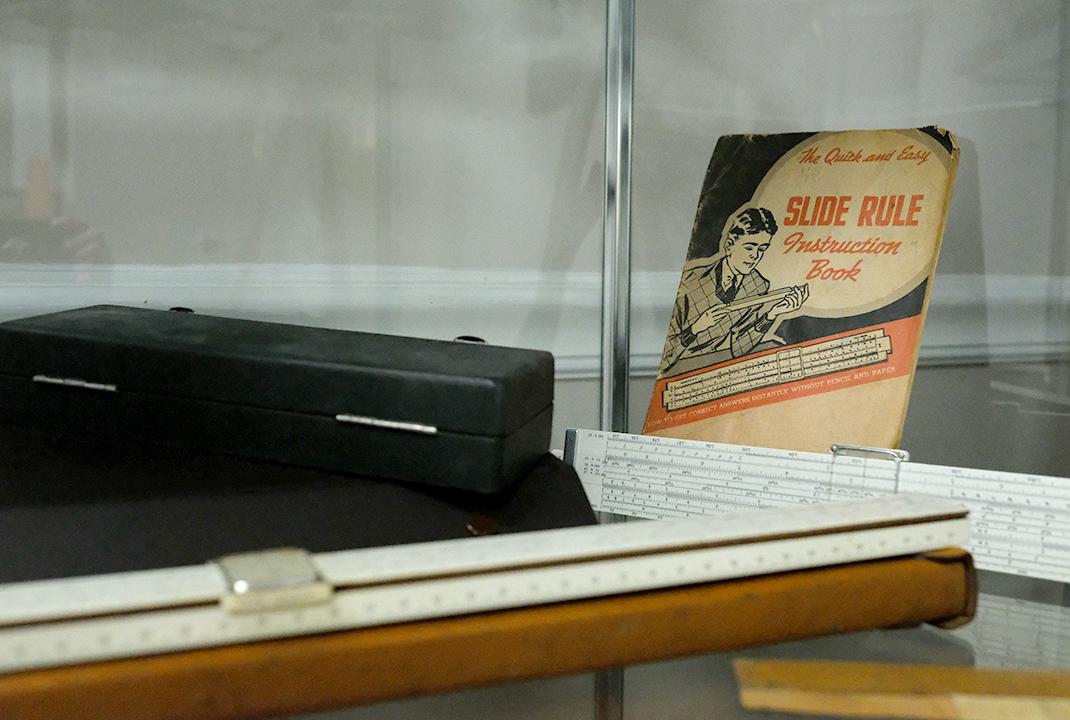
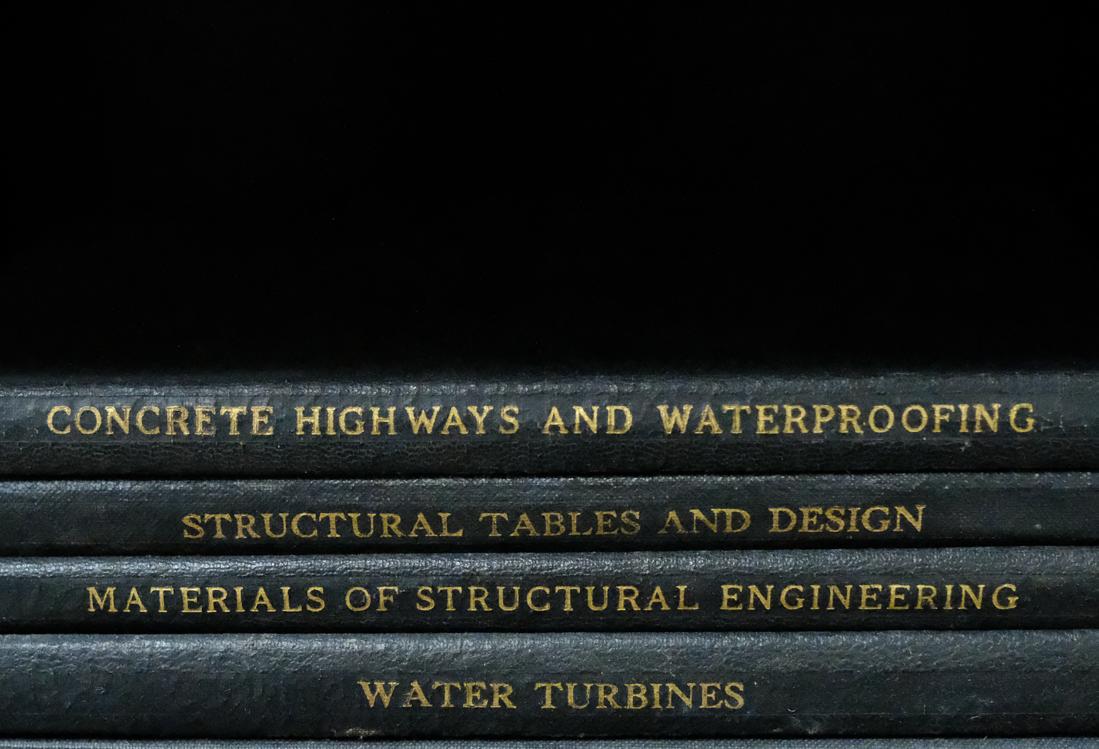
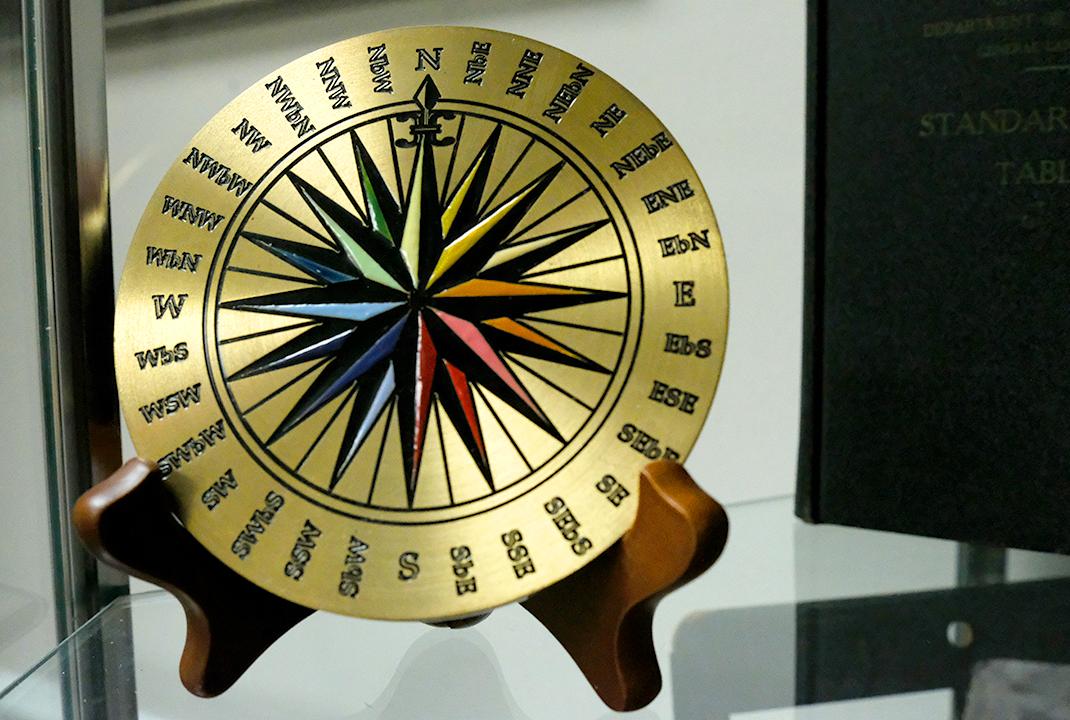

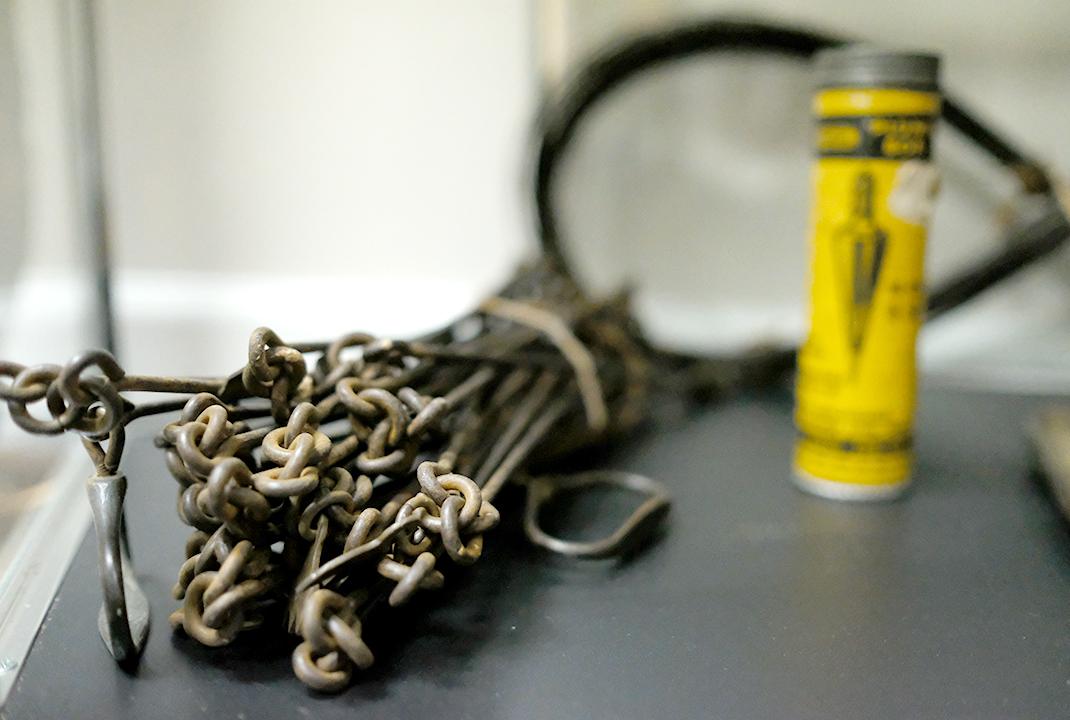

The Florida Surveyor Page 35
Tennessee Valley Surveying 1745 to 1780
By E.D. HEPPERT, JR. (Originally published December 1975 in Surveying and Mapping.)
Surveyors Before Daniel Boone
T he Kentucky Road from Great Island (at present Kingsport) into the “Kentucky District” of Virginia in 1779 was built by Daniel Boone well after the survey work of the early land speculators. By 1750 one group had surveyed and recorded plats for some 80 different sites, which later became most of the major towns and cities on the New, Clinch, and Holston Rivers, extending from Blacksburg, Virginia, to Kingsport, Tennessee.
“Claiming a first” is always risky, but present records of Augusta County at Staunton, Virginia, show that by 1750 land claim surveys were made and recorded as far west as the present city of Kingsport. This was 19 years before “the first permanent settlement in Tennessee,” accredited to settlers coming up the Watauga Valley from the Yadkin River area in North Carolina. The first settlers were arriving on the promises of choice land by the speculators. Later, many came to secure grants for Military service. But this is getting into subject matter to be covered later, so let us go back and start with the surveying equipment and regulations of that period.
Early Surveying Texts
There were few texts in print at that time, one of them being Geodaesia, written by John Love, which was first
printed in 1688. Love had been a surveyor in North Carolina and Jamaica before returning to England, where he wrote and published his book. Eleven editions were published in England and, finally, two more editions were printed in the colonies. Other than the unfamiliar printing symbols and terms, one would find nothing too different in this book from elementary surveying and surveying texts of today. Even then the author recommended that a surveyor should check each closure “by comparing the sum of the eastings with the westings, and the sum of the northings with the sum of the southings.” Another text of the period was A Treatise on Land Surveying, written by Robert Gibson in 1739. In 1785 it was reprinted in the colonies—the first surveying text to be printed here.
By the time surveying had gotten into the present Tennessee Valley area, the unit of measure was the pole of 16½ft. length. During earlier times a rod, a rood, or a perch were commonly used, but all were usually of the same length. In some cases, though, a perch was also a term of square measure. An early rule long since forgotten in modern surveying, was that an acre is defined as 160 sq. rods or poles, rather than in terms of square feet. A page from Geodaesia shows a table of “Long Measures” as used in 1688, which
October 2022 Page 36
favored the use of the term “perch” rather than “pole.”
Surveying Equipment
Although the surveying texts of that day described the use of other instruments, it is most unlikely that anything other than a compass mounted on a Jacob's Staff was used for early frontier surveying. The ingenuity of the colonial craftsmen was not to be outdone by the demand for equipment. Colonial newspaper advertisements placed by instrument and clock makers showed that surveying equipment was being made for sale here by the mid-1700s. Fine compasses made of brass were produced in Maryland as well as New England; some surveying compasses were even made of wood. Each unit had a wooden carrying box, and the sighting vanes were either removable or could be folded for storage. The better and more expensive units had tables of sines and cosines engraved on the metal face to assist in figuring latitudes and departures in the field. Some compasses had special tables of corrections for magnetic variations. A wooden unit 10¼ in. long with sight vanes 5½ in. high was made in 1762 by Joseph Frye to survey land in the present State of Maine.
The theodolite was used on special work, where it was necessary to check the latitude and longitude, as its use was noted in the reports of the commissioners for the Fairfax Line
Survey of 1746. This survey was made to locate “the head Spring of North Branch of the Potomack.” Young George Washington was supposedly a helper on this survey, although he would have been only 14 years old at the time.
Surveying chains and pins varied with the skill of the builder and often were carried in a cylindrical metal box. Chains were normally of 4-pole length; however, this was not universal as some work specifically called for the use of a 2-pole chain. Generally this was specified to minimize errors caused by the practice of surface chaining, rather than horizontal chaining. In later times when the practice of measuring distances in feet became more regular, chains of 40-, 50-, and 60-ft. lengths came into limited use. By definition the 66-ft. chains were divided into 100 links, each 66–100 ft. long; however, later chains measuring in feet contained links 12 in. long, and one 60-ft. chain had twenty 36-in. links. The chains usually had swivels at the quarter points to help keep them from kinking. Frequently brass tags were attached marking the major units of the chain. Although not an approved practice, records show that some surveys were made with a knotted rope.
Practices and Regulations
The point where regulations leave off and practices begin in surveying work today is a broad area, and it must have been the same in this earlier period.
The Florida Surveyor Page 37
Tennessee Valley Surveying 1745 to 1780
This article will cover both subjects and they will not be separated, except for specific references made on these points. At the time when the State of Tennessee was organized, the current Land Laws of the State of North Carolina were incorporated into the Tennessee Code, which makes a good reference point for surveying work beginning around 1800. However, first, the surveying work of Virginia's surveyors before 1800 will be dealt with.
Surveying in Virginia was not permitted unless the surveyor was licensed, and this was granted upon examination by the Masters of the College of William and Mary. Only one official surveyor was permitted for each county, and it was also required that he be a resident of that county. Most county surveyors had several assistant surveyors, particularly in the large newer counties, some of which extended 100 miles or more westward. Regulations were also enacted covering the duties of chain carriers (or bearers), one of which required that they be sober.
At this particular time, surveying was permitted only during the wintertime, October through March, but no reason for this was given. The lack of tree foliage in the winter and the need for spring work on the farms are obvious reasons, and it is also known that Indians of that time usually did not make war in the winter. All surveys
had to be recorded in the county court records, and the plat had to be drawn within a specified number of years. There was a recording fee paid to the college which was used for the examination of the surveyors working in that county.
Some of the regulations made from time to time were to suit special occasions not always mentioned. One early North Carolina law required that all tracts be laid off from roads or rivers by right angles to them. Frequently, the maximum size of the survey tract was also given or required to be of exact acreage, even though located in virgin territories.
Work of Frontier Survey Parties and Commissions
Most surveys included here were in areas uninhabited by colonial settlers; however, it was not until after the beginning of the French and Indian War that the Virginia and Carolina frontier activities were hindered by the Indians.
As best as can be determined, all surveys mentioned here were made with a compass and any corrections, if made, were not recorded, except on some of the commission work. Lines were usually recorded as compass bearings, but some of the surveyors used a compass inscribed with the compass points and occasionally intermixed the compass points with bearings. On the land company parcel
October 2022 Page 38
E.D. HEPPERT, JR.
surveys, distances were recorded in poles frequently in full tens, suggesting possible rounding. On cross-country lines, distances were recorded in miles and fractional miles, and some with poles on the end. There is no indication that anything other than “surface chaining” was done, without distance correction for slope. Very few notes have been found on the size of survey parties; nevertheless, a few field books on parcel surveys lead one to the conclusion that the surveyor kept his own notebook and was assisted only by chain carriers, as they were usually called. On state boundary surveys it was a different story. For these surveys, there were not only two or more surveyors for each side, but also commissioners representing each governor.
Several books and almost 200 years covered the settlement of the disputed boundary line from the Atlantic to the Mississippi. Only the highlights of this particular period will be included here. The first section, some 245 miles, was run in 1728, the western end being at Peters Creek on the headwaters of the Dan River. The extension from that point made in 1749 by two commissioner/surveyors, one each from Virginia and North Carolina, carried the line westward “90 miles and 280 poles,” ending on the waters of the Holston shown at that time as “Steep Rock Creek, 336 miles from the ocean.” This was still in the mountains, probably on Beaver Dam Creek at a point some 3
miles southwest of Damascus, Virginia, 10 miles east of the Holston and 20 miles east of Bristol.
At this time, all of the land north of the Holston River as far west as the Great Island (at Kingsport)—although at some points it is as much as 20 miles south of the present state line—was considered as part of Virginia. Land company surveyors from Virginia made numerous parcel surveys for land speculators and settlers in the present Bristol and Kingsport areas during the 1749 to 1753 period. Following a time of Indian wars, the Virginia land company surveyors returned in 1767 but were being pressed for a boundary line by the North Carolina settlers coming across from the Watauga River areas.
A new Commission authorized in 1778 was directed to check the original work “by astronomical observations,” make necessary corrections and carry the line due west to the Tennessee River. They were to “endeavor to procure the most accurate instruments—borrowed from individuals or any seminary of learning.” In September 1779 the commission met at the starting point and made necessary determinations of latitude and longitude. Here enters one of the strange questions in the settlement of the line. The Fry & Jefferson Map, published in 175l, shows “Steep Rock Creek” to be located in the mountains and a branch of the present Holston River, probably the present
The Florida Surveyor Page 39
Tennessee Valley Surveying 1745 to 1780
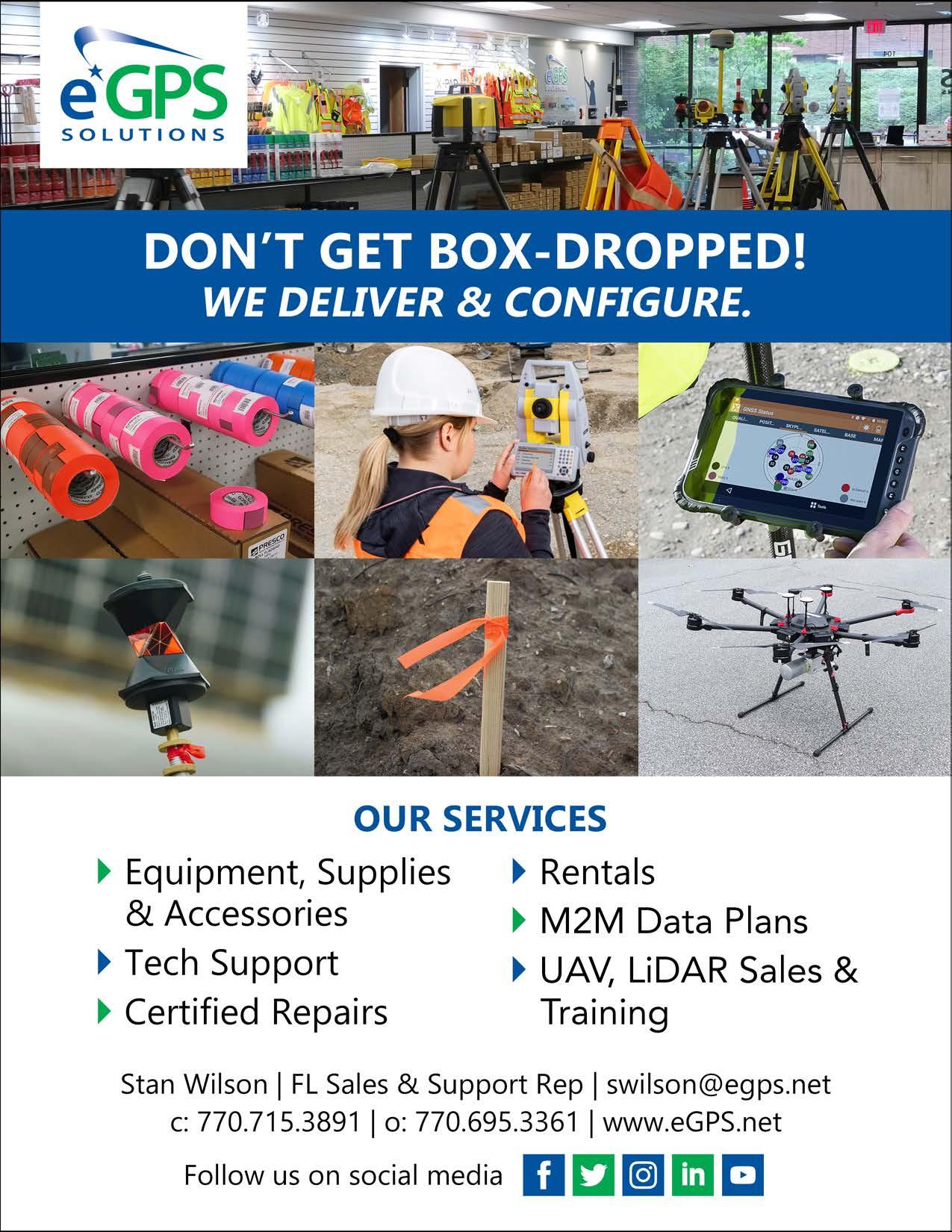
DID YOU KNOW?
The Parthenon, located in Athens, Greece was pretty much intact for several centuries after it was constructed.
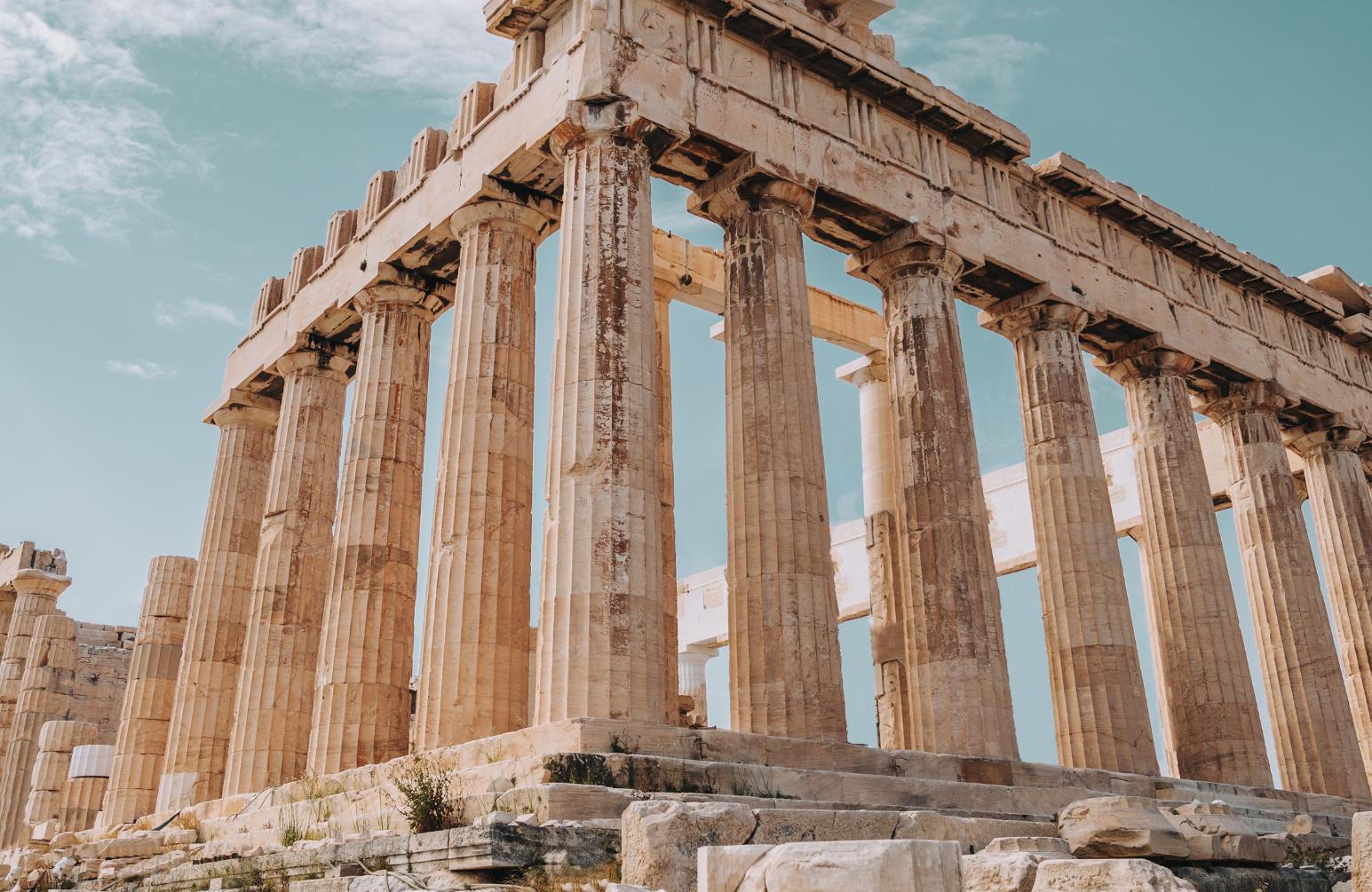
The ruins we see today were not caused by the elements of nature or traditional passage of time, but by an explosion of gunpowder in 1687.
Source
The Florida Surveyor Page 41
Beaver Dam Creek. However, the next running of the line was an Indian boundary survey by Col. Donelson in 1771, who went back east of the mountains and started “at the Steep Rock on the waters of the Great Canaway River”—the headwaters of the present New and Kanawha Rivers.
The 1779 commissioners apparently were unable to settle on suitable remaining line markers and also started at the eastern side of the mountains. They then noted that they “were in superficial measure of 329 miles west” of the ocean and “that there should be an abatement of 12 miles for mountainous and uneven ground,” with a corrected total of “317 miles west of Currituck Inlet” on the ocean. They also “measured off the one mile and 2011/2 poles in a due south course” before beginning westward again. After proceeding some 40 miles, the North Carolina men insisted that the line was too far south and they would not continue. After making observations and debating the problems, the Virginians continued that line while the North Carolina group ran another line parallel and 2 miles to the north as far west as Cumberland Gap, the Gap falling approximately halfway between the two lines. Here the North Carolina men terminated their line, while the Virginia surveyors went on arriving at the Tennessee River in March 1780. The original party had several commissioners, sur veyors, pilots, and
hunters as well as a company of militia from each state.
A map and only brief information are all that the author has found on the 1749 survey, but several articles as well as court records are available on the 1779-80 extension. The Virginia–Tennessee line was run several times in the next century and was settled only by a 1903 decision of the U.S. Supreme Court.
Indian Boundary Surveys
Tennessee and Southwest Virginia areas are crossed by many Indian boundary lines as the settlers pushed westward or were forced back eastward by successful Indian movements, each new boundary line resulting from long treaty negotiations. Some of the lines were established by actual surveys in the field.
In a meeting at Lochabor, South Carolina, during October 1770, a treaty was negotiated with the Cherokees, in which they sold part of the Upper East Tennessee and Southwest Virginia areas. By a treaty made a year earlier, the boundary was to have run from Fort Chiswell (east of Wytheville) direct to the mouth of the great Canaway (Kanawha) on the Ohio River. At Lochabor, the final agreement provided for the new line to begin at “the end of the North Carolina boundary (Steep Rock Creek) running in a west course to a point 6 miles east of Long
October 2022 Page 42
E.D. HEPPERT, JR.
Tennessee
Island in Holstons river, thence in a — course to the confluence of the great Canaway & Ohio rivers.” This line, called the Ministerial Line, was to be run by Col. John Donelson; however, through some “field changes” with the Cherokee chiefs, either by collusion or possible error, the line from the Holston (above Kingsport) went northwesterly all the way to the Ohio rather than somewhat easterly to the agreed point. Part of the lines run by Col. Donelson from his May 1771 report and map follow:
“—due West direction—crossing the lron mountain to several marked trees on the south fork of Holstons River near several small Islands in the same. Thence down the stream thereof as it meanders 30 miles to a point 6 miles above the Long Island. [The Col. Donelson map shows the point to be just east of Fall Creek.] Th. N5°W 4¼ miles to a Red Oak marked on the top of a Ridge on Col. Byrds Road. Th. N36½ W7¼ miles crossing the N° fork of Holstons River to a point of Rocks on the top of Clinch Mountain. Th. N45°W 20½ miles & 32 poles crossing Clinch River …”
Land Company Surveyors
Virginia land companies were the result of a decision of the Council to attempt to get settlers on the western lands in order to establish claims ahead of the French. Large land grants were offered to groups of prominent citizens who could have the land to sell if sold to a settler living on the land. Thus,
the need for frontier surveyors who served as subdividers, developers, and promoters, usually known as the Agent of the Company. Although others were authorized, only two land companies were working in the present Southwest Virginia and Upper Tennessee areas. Each had royal grants to survey, claim, and sell tracts on a first-come basis. Col. John Buchan was surveying from 1746 to 1750 on a 100,000-acre grant to the Wood River Company, while Dr. Thomas Walker was surveying in 1753 and again in 1767 on an 800,000-acre grant to the Loyal Company. More than a hundred tracts were surveyed, recorded, and occupied on the waters of the Clinch and Holston Rivers. The first occupancies known were made from 1750 to 1755, but these people were driven out by Indians, and it was not until about 1767 that they were able to return.
Col. Buchanan usually made two trips a year, one beginning in January or February, and a second late in the year, with most of his surveys from 50 to 100 miles from the nearest colonial settler. Little is known about Buchanan's equipment or field records; however, all of his surveys are available in original form in Augusta County record books. A tabular summary of his work on one of these trips is shown (see Table 1). The upper lines are information from courthouse records, while the second lines (italics) are comments by the author on each survey.
The Florida Surveyor Page 43
Valley Surveying 1745 to 1780
Colonel John Buchanan for Wood River Company
After a close review of the table, one wonders about the speed of modern surveyors. On this trip, eight tracts which was a total of 17,000 acres, were surveyed in only 15 working days. To accomplish this, the survey party traveled more than 70 miles from the first site to the last, probably moving the campsites as the party progressed. Col. Buchanan was a Scotch-Irish Presbyterian and, like some of the other surveyors of his time, did not work or explore on Sundays, even though the party was away from home. One might question the accuracy and permanence
of his work, but, here too, his record speaks for itself. All of the sites shown were later patented (occupied and deeds granted) and can be identified in the field today. Almost all of the sites have fencing or lines of trees several miles long. The outline map ( Fig. 1) shows one of his earlier surveys which later was to become a main portion of Bristol. Some of the field books and sale entry books of these two surveyors and the Land Companies are still in existence and are available for study on microfilm, in addition to the plats found in courthouse survey record books.

October 2022 Page 44
SURVEY TRIP—Spring of 1750 Table 1
E.D. HEPPERT, JR.
The Watauga Purchase
The first surveying on the North Carolina side of the area, located by the author, was that which followed the Watauga Purchase from the Cherokee Nation in 1775. Broadly speaking, the limits of the area were the Holston on the north, the mountains on the south and east, and the west point being the earlier boundary limit “on the Holston 6 English miles above the Long Island (Kingsport).” This area later became the main part of the new State of Franklin. Surveys began in April 1775, with William B. Smith and James Smith as the surveyors. The first tracts show the line distances to be recorded in chains (of 66-ft. length) read to the nearest one-half chain. Included were tracts for John Sevier and several for William Bean, who is known as the first permanent settler in Tennessee. Records of these are available in the Land Office, Tennessee Library and Archives.
The New Nation 1776–1796
These were troubled years over lands later to become Tennessee, both on the political and the surveying frontier. The wars were over, making settlement and ownership of western lands the concerns of the entire nation, and, in particular, the people living on the land. Probably the biggest incentive to settlers was the practice of awarding land to the officers and soldiers of the various wars, with some of the individual grants
running into thousands of acres. The need for surveyors was recognized by all parties concerned. Much of the Tennessee political unrest was caused by disputed land titles where both Virginia and North Carolina settlers were claiming the same lands. Some of the events during this period of time illustrate the problems.
In 1773 Botetourt County appointed road surveyors along Beaver, Steele, and Muddy Creeks west of the present Bristol, while in 1776 Fincastle County appointed road surveyors for the section between the present Blountville and Kingsport. These early Virginia counties were seated east of Wytheville, over 100 miles from the location of the settlers. In 1779, North Carolina divided its western lands known as Washington County separating off a new county mostly of Virginians, to be known as Sullivan County. In 1782, it recognized as legal four Virginia land patents in the Bristol and Kingsport area, these patents had been granted almost 30 years earlier. In 1783 North Carolina established an area around the present day Nashville as a Military Land Grant Reservation, and at the same time reserved “Cherokee Lands” below the Holston and Tennessee Rivers. In 1788, it set aside land known as Indian Hunting Grounds which prohibited surveys and entries of colonial settlers in the entire Carter Valley area west of present Kingsport. Self-government, land titles, Indian displacement, and
The Florida Surveyor Page 45
Tennessee Valley Surveying 1745 to 1780
Figure 1. Tennessee Surveyors Districts.

western movement were problems facing the founders of the State of Tennessee.
Land Cession by the States
The awarding of land to the veterans of the wars was leading to many disputed claims in the western lands. Even in areas where there was no conflict between the states, the conflicts between claims made on paper and claims made on the ground were numerous.
Toward an organized procedure for setting up land titles and also for the award of public lands, Congress recommended that all states cede Western lands to the new nation.
In 1784 and 1789 North Carolina submitted its Act of Cession of the Tennessee Territory, and in 1790 it was accepted by the Federal Government.
It was part of “The Territory South of the Ohio and East of the Mississippi,” the name applied to this entire group of western lands. During this period of time, the colonists were without military support and land titles, and some local groups organized their own government, one of which was the State of Franklin in East Tennessee.
Rectangular Survey System
Such a system was first used in parts of New England and was proposed for use in the western lands of the new nation. By an act of Congress in 1796,
October 2022 Page 46
E.D. HEPPERT, JR.
a Surveyor General was appointed to oversee the work in the Ohio Territory and to establish the system for all western lands. The Federal System was not used in the eastern states, but all of the new states were surveyed under this system, with the exception of Texas, Kentucky, and Tennessee which were sur veyed in part by individual state systems.
Tennessee Surveyor District Nos. 1 to 6
In 1806 the legislature established a rectangular system for the State of Tennessee, and provided for a division of the eastern part of the state into the land districts to be known as Surveyor Districts (see Fig. 2). This included all of East and Middle Tennessee except for an Indian Territory previously reserved for the Cherokees. The First District was to be the land previously set aside by the State of North Carolina as an area for Military Grants. The law required that the sections be 6 miles square and established with the meridians. The surveyors were required to survey the section lines and mark the corners. They were to draw a map to the scale of 400 poles (11/4 miles) to the inch, and the maps were to show “the quality of lands and on each line distinguishing the same by colors.”
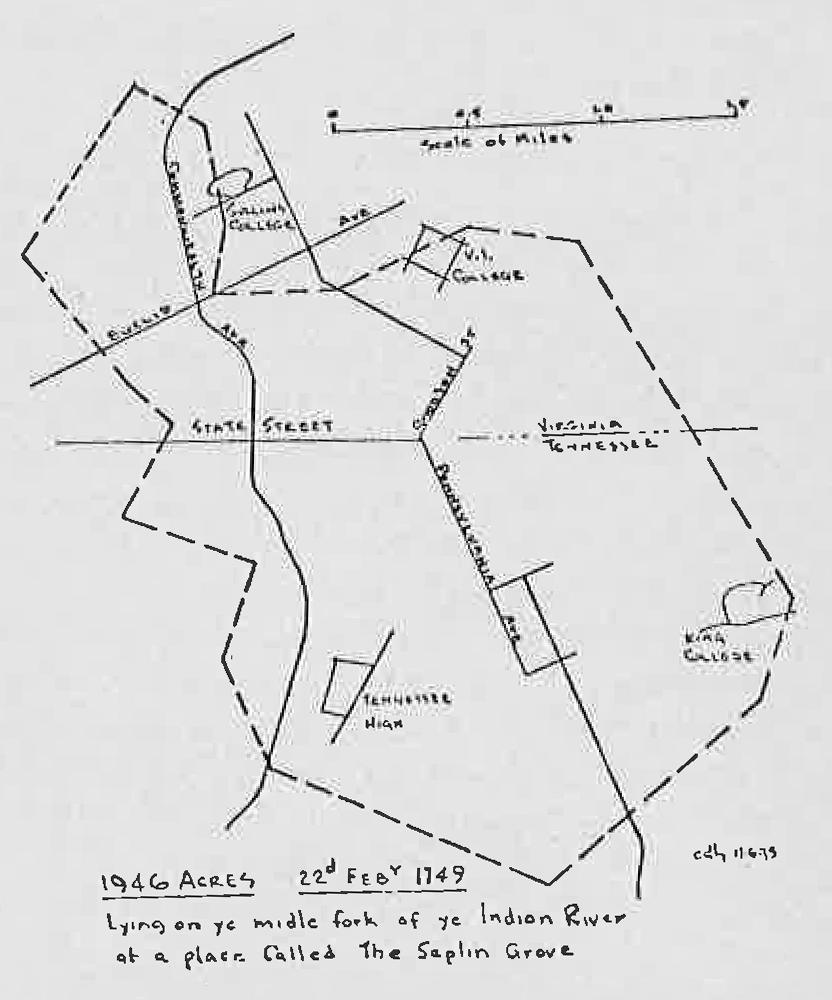
An original copy of the map for District 6 (circa 1807–1808) shows that there was no following of the Federal System. The Tennessee-Virginia line was used as the baseline, and the map was drawn
Figure 2. One of Col. Buchanan's Surveys superimposed on the principal features of Bristol, Tennessee-Virginia.
with the south side up. Sections were numbered consecutively for the entire district, rather than in ranges. How far the surveyor went in actually doing the field work and in marking the corners is not apparent, but this District Surveyor was familiar enough with the contiguous boundaries of the Indian Territory to keep east of the Big Pigeon River and to show sections in the area south of the “Frenche Broad River.”
The map, which is 491/2 x 77 inches
The Florida Surveyor Page 47
Tennessee Valley Surveying 1745 to 1780
in size, includes all principal rivers, creeks, as well as roads, and shows the settlements of Elizabethton, Jonesborough, Blountville, Long Island, Rogersville, and Greenville. The map legend contains the following notation: “The Greene Serpentine Lines Represent the Watercourses; the Red Dotted Lines Represent the Roads; the Black or Blue on the Sectional Lines Represent the First Rate Land; The Greene Represents the Second Rate Land; the Red Represents the Third Rate Land.”
Tennessee Surveyor District Nos. 7 to 13
Legislation of 1819 provided “that that part of the state usually denominated the congressional reservation shall be divided into seven districts, in each of which one principal surveyor shall be appointed by joint ballot of both houses of legislature.” Section lines here were to be 5 miles square instead of 6 miles square. The maps were to be drawn to a scale of 160 poles (½ miles) to one inch; however, all maps examined by the author were drawn to the scale of 400 poles to the inch. The Tennessee State Library and Archives has on file copies of maps for Surveyor District Nos. 1, 3, 6, 7, 8, 9, 10, 11, and 13, all of which were drawn between 1807 and 1819.
Also in 1819, a surveyor's district known as Hiwassee District was established. Sections were 6 miles square laid out on the meridian lines with “standard 1 to 36 Federal
Numbering.” The Ocoee District was opened in 1836, again with 6 miles of square sections and standard federal numbering. In this area, however, the baseline ran with the mountains in the direction south 20° west.
The extent of the field drawing and records of the Tennessee Rectangular Survey System is not known to the author; never theless, it is known that baselines and numbering systems were established throughout much of the state. The 1855 and 1862 KentuckyTennessee maps show full grids as well as all of the adjoining areas of Georgia, Alabama, Mississippi, Arkansas, Missouri, Illinois, Indiana, and Ohio. A Kentucky-Tennessee map of 1883 shows the grid in both states to be limited to the areas west of the Tennessee River.
Concluding Remarks
As this article on East Tennessee Surveying concludes, the story is not finished, of course. The study has been limited to the period of 1740–1780, covering the land area of some 150 miles east of Kingsport. Surprisingly, surveyor field books, land entry books, trip journals, computations, and land office records still exist for much of this period. Investigations show that many items accepted as historical facts are actually erroneous assumptions, now easily disproved by documentary evidence. Surveying field books apparently are a source not yet tapped by historians.
October 2022 Page 48
E.D. HEPPERT, JR.
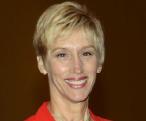
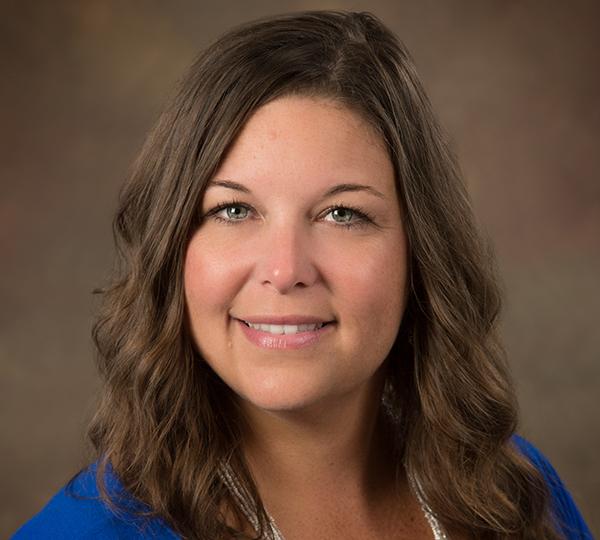
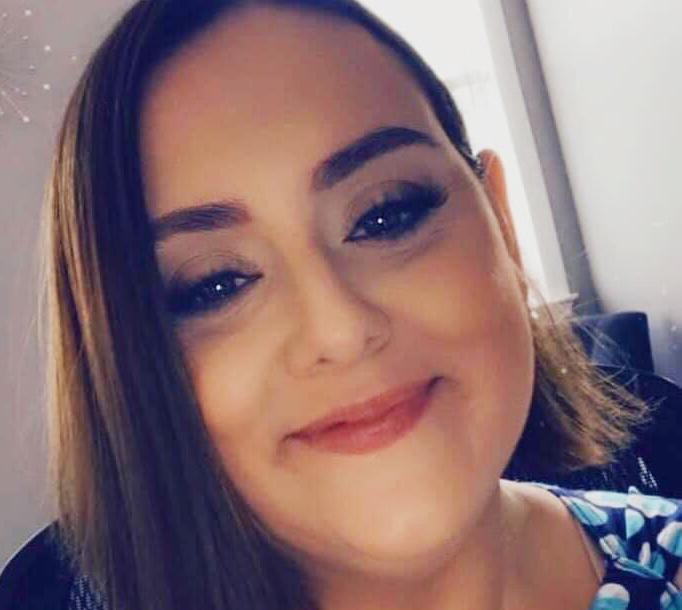

The Florida Surveyor Page 49 Executive Director Rebecca Culverson director@fsms.org Communications Coordinator Justin Ortiz communications@fsms.org Regional Coordinator Cathy Campanile seminolecc84@gmail.com Education Director Samantha Hobbs education@fsms.orgADMINISTRATIVE Staff
Past Presidents
1956
H.O. Peters
Harry C. Schwebke
John P. Goggin
R.H. Jones
1960
Hugh A. Binyon
Russell H. DeGrove
Perry C. McGriff
Carl E. Johnson
James A. Thigpenn, III Harold A. Schuler, Jr. Shields E. Clark
Maurice E. Berry II William C. Hart
Frank R. Schilling, Jr.
1970
William V. Keith
James M. King
Broward P. Davis
E.R. (Ed) Brownell E.W. (Gene) Stoner Lewis H. Kent Robert S. Harris
Paul T. O’Hargan William G. Wallace, Jr. Robert W. Wigglesworth
1980
Ben P. Blackburn
William B. Thompson, II John R. Gargis
Robert A. Bannerman H. Bruce Durden
Buell H. Harper Jan L. Skipper Steven M. Woods Stephen G. Vrabel W. Lamar Evers
1990
Joseph S. Boggs
Robert L. Graham
Nicholas D. Miller
Loren E. Mercer Kent Green Robert D. Cross Thomas L. Conner Gordon R. Niles, Jr. Dennis E. Blankenship W. Lanier Mathews, II Jack Breed
2000
Arthur A. Mastronicola Michael H. Maxwell John M. Clyatt
David W. Schryver
Stephen M. Gordon
Richard G. Powell
Michael J. Whitling
Robert W. Jackson, Jr.
Pablo Ferrari Steve Stinson
2010 Dan Ferrans
Jeremiah Slaymaker Ken Glass Russell Hyatt Bill Rowe
Dale Bradshaw Lou Campanile, Jr. Bob Strayer, Jr. Dianne Collins
2020
Don Elder
Hal Peters
Page 50
Please
Advertise With Us!
All advertisements contained within the publication are published as a service to readers. Publication of the advertisements does not imply or express any endorsement or recommendation by FSMS.
Benefits: Full color; hyperlinks added to your webpages as well as email addresses.
Requirements: Contracts for one year (11 issues) receive
discount if paid in advance; 15% for Sustaining Firms. (Ads should be in jpeg, pdf, or png format)
ads and/or changes are due by the 25th of each month.

email communications@fsms.org to notify us of upcoming events.
10%
New
Size 1 Issue 2-11 Issues Full Page $720 $395/issue 1/2 Page $575 $320/issue 1/4 Page $290 $175/issue






























































































